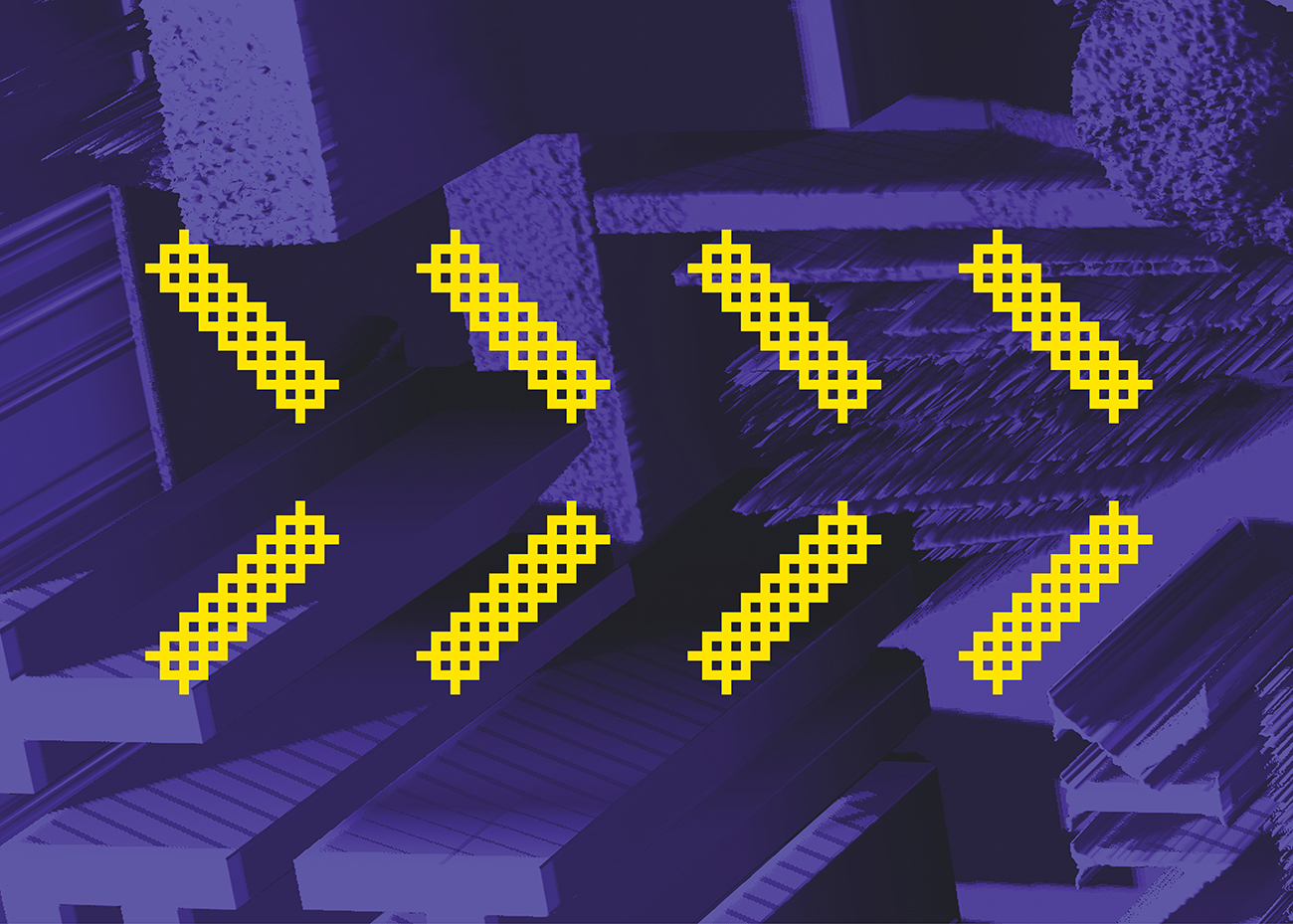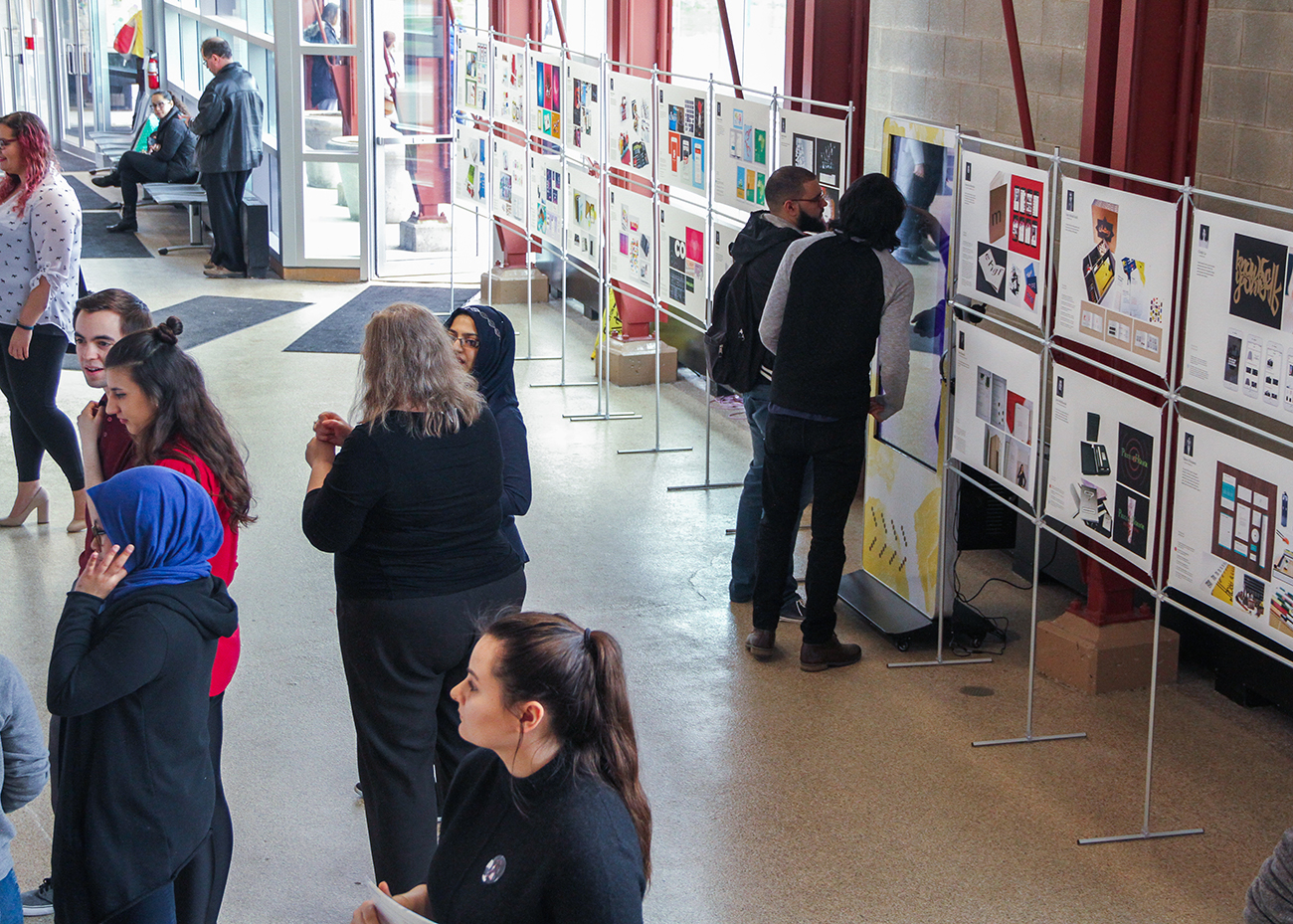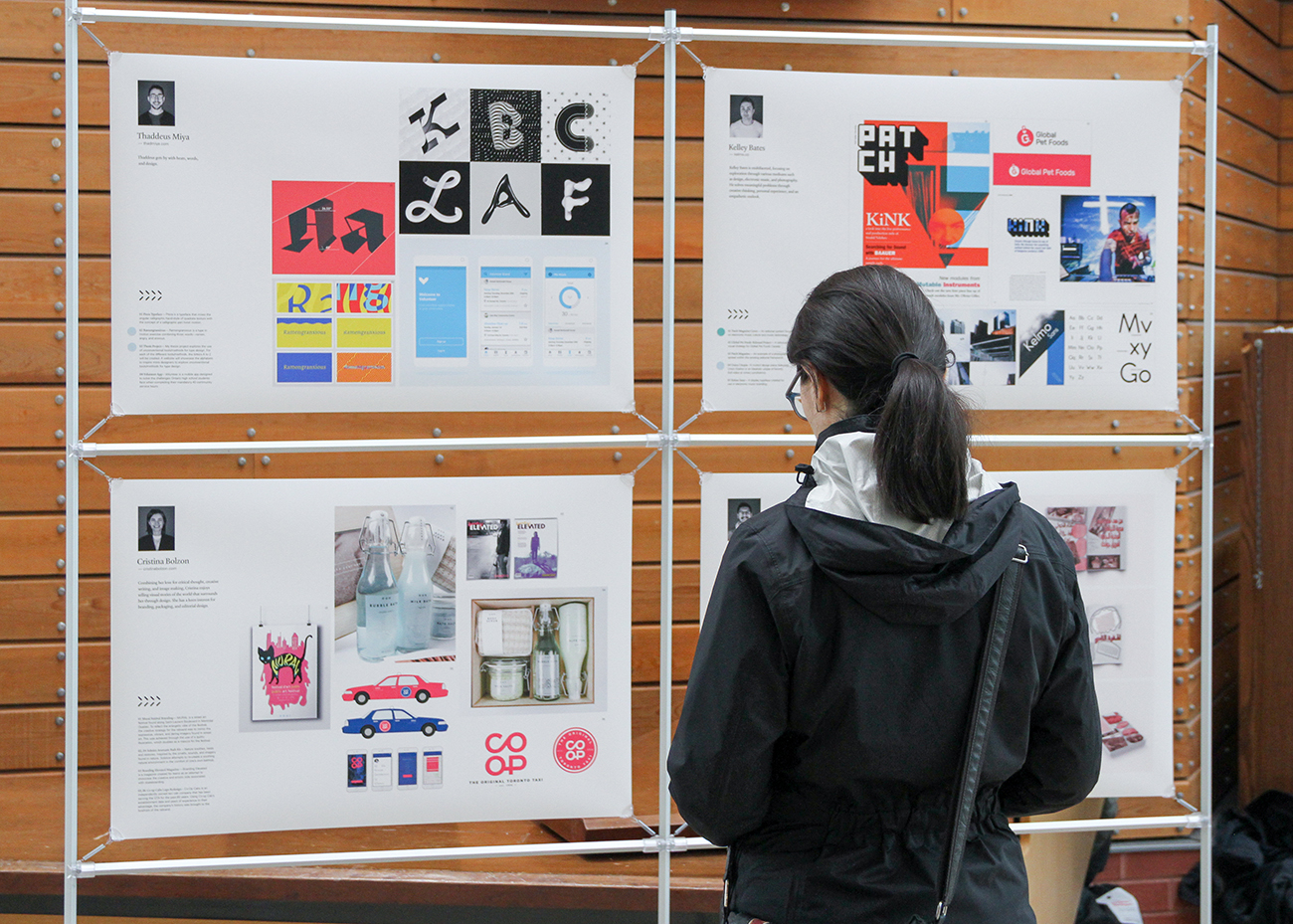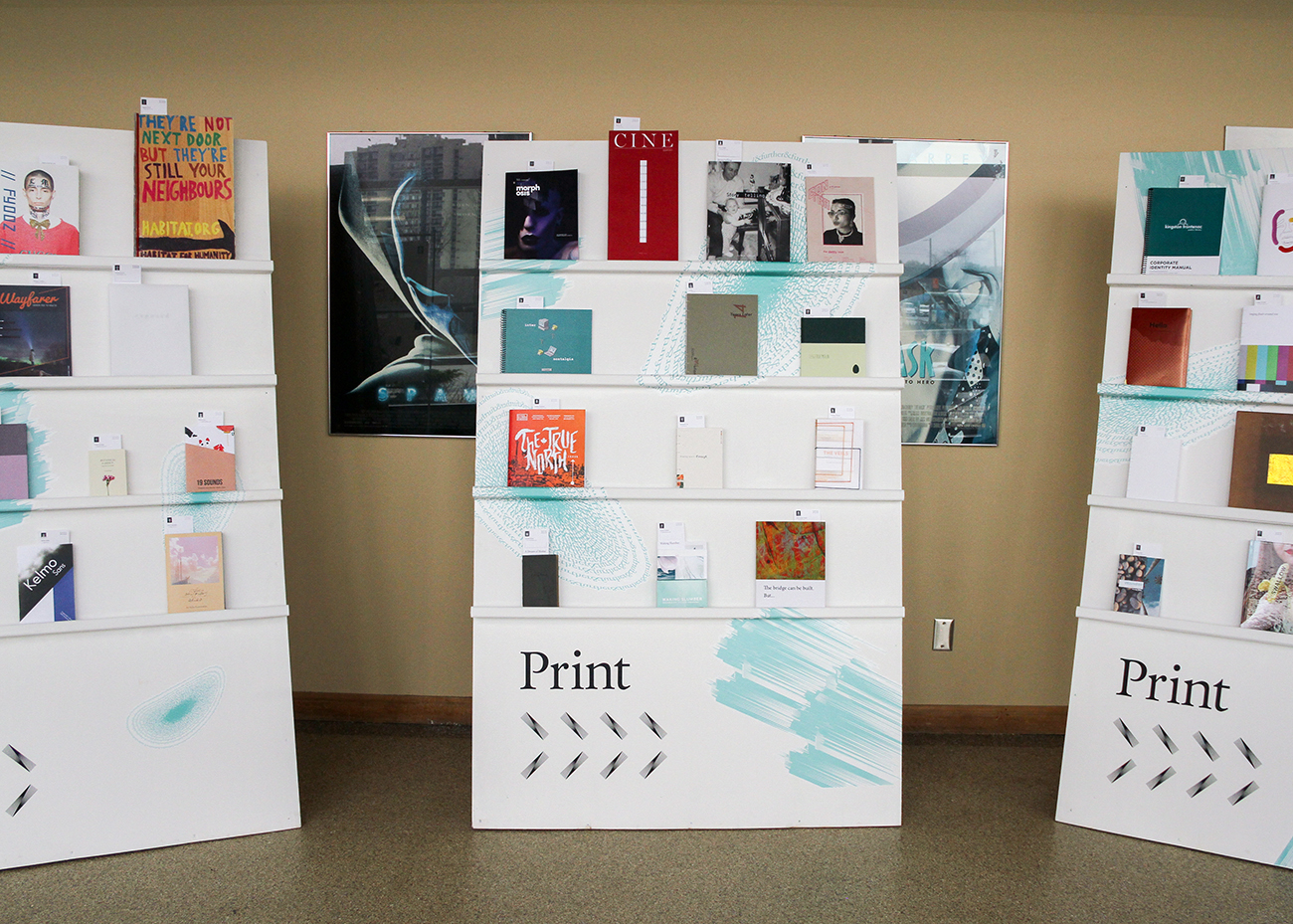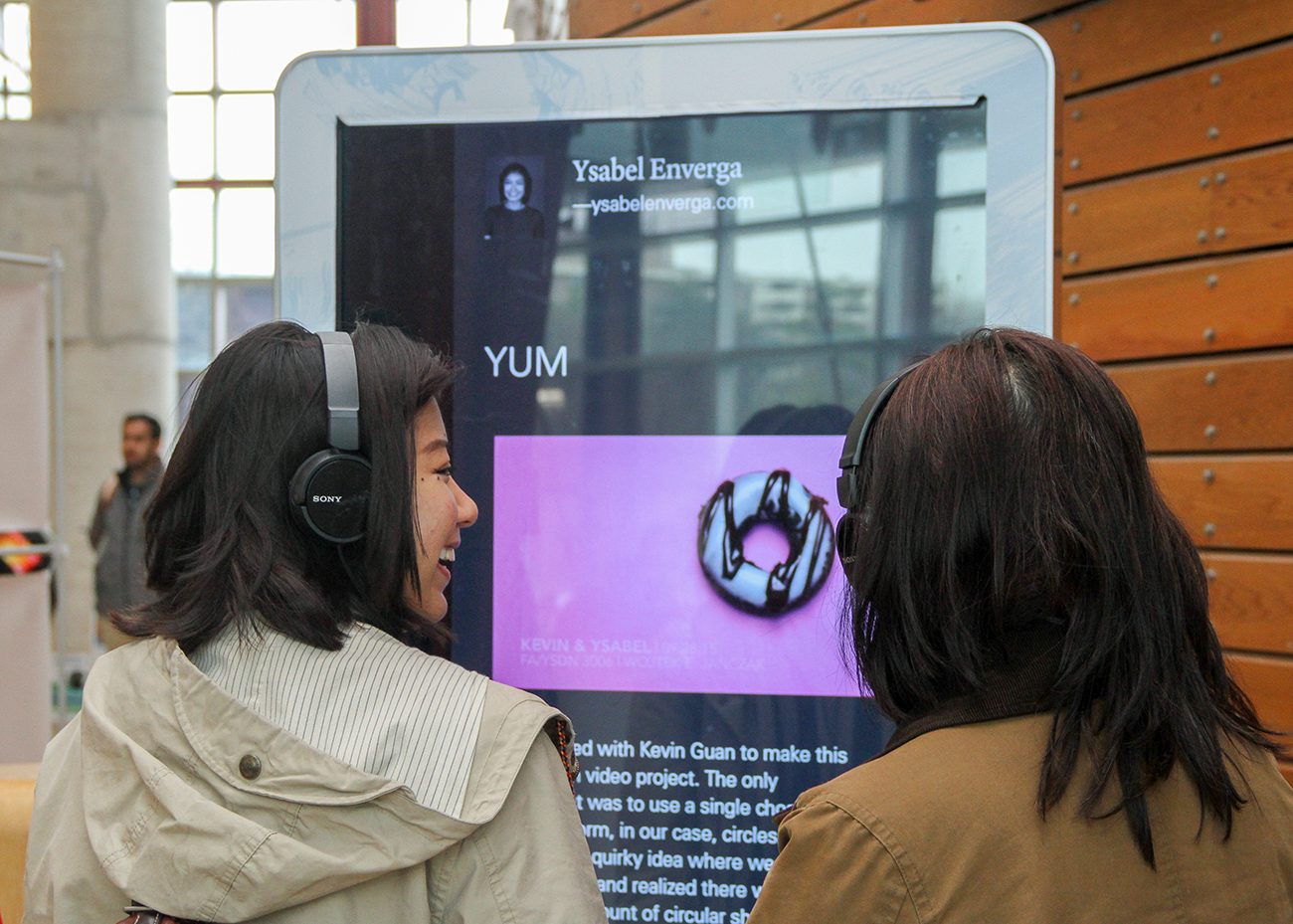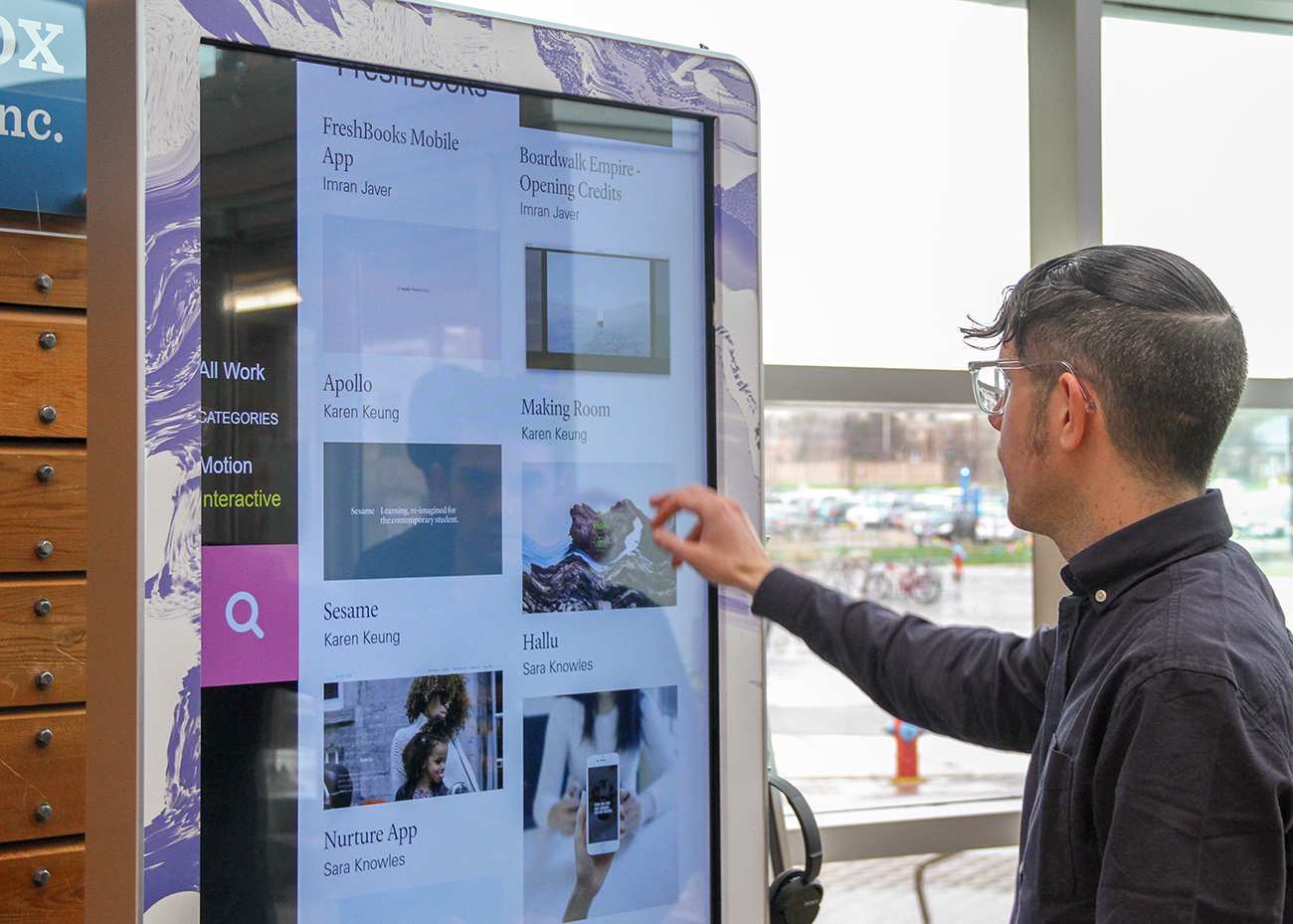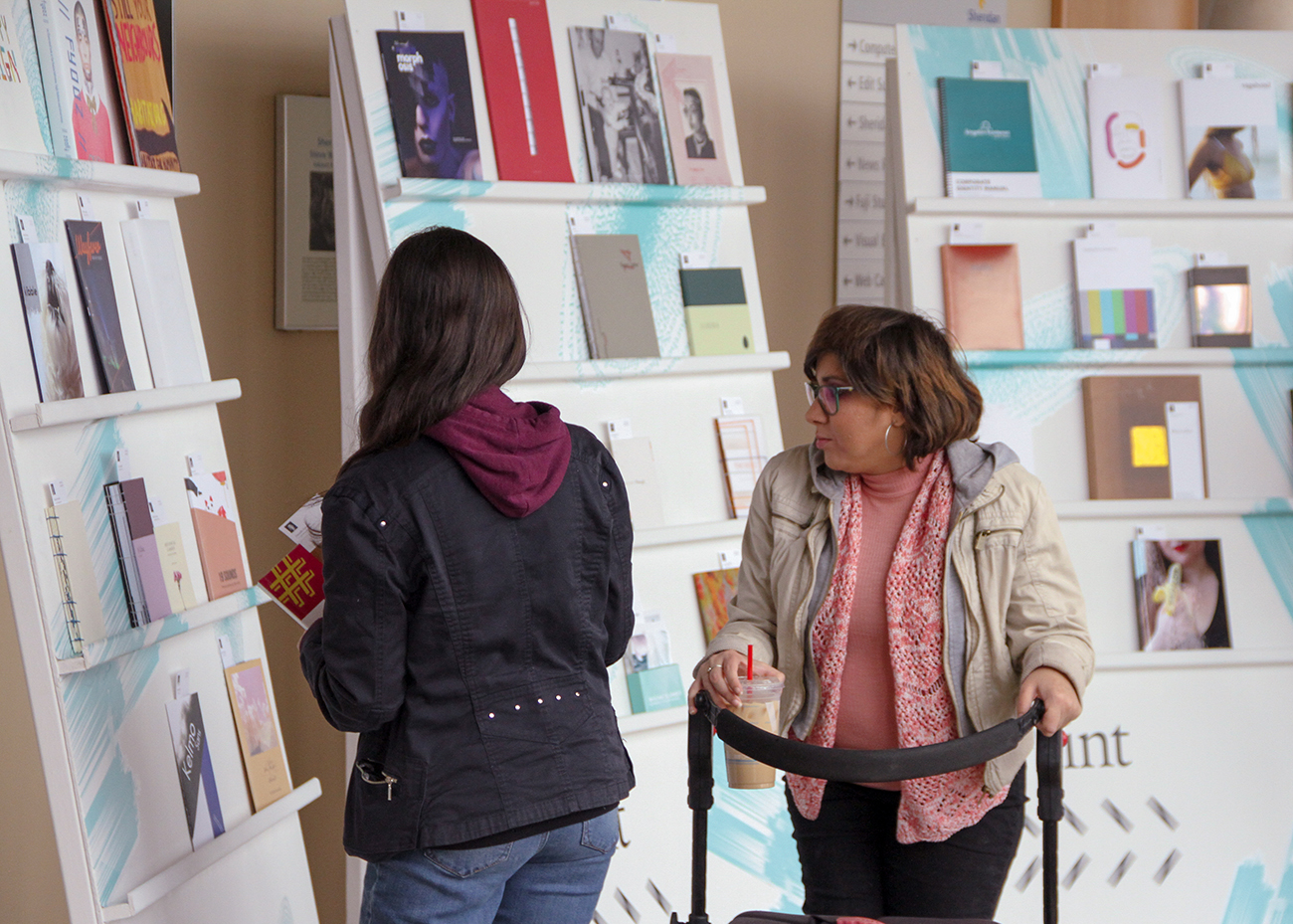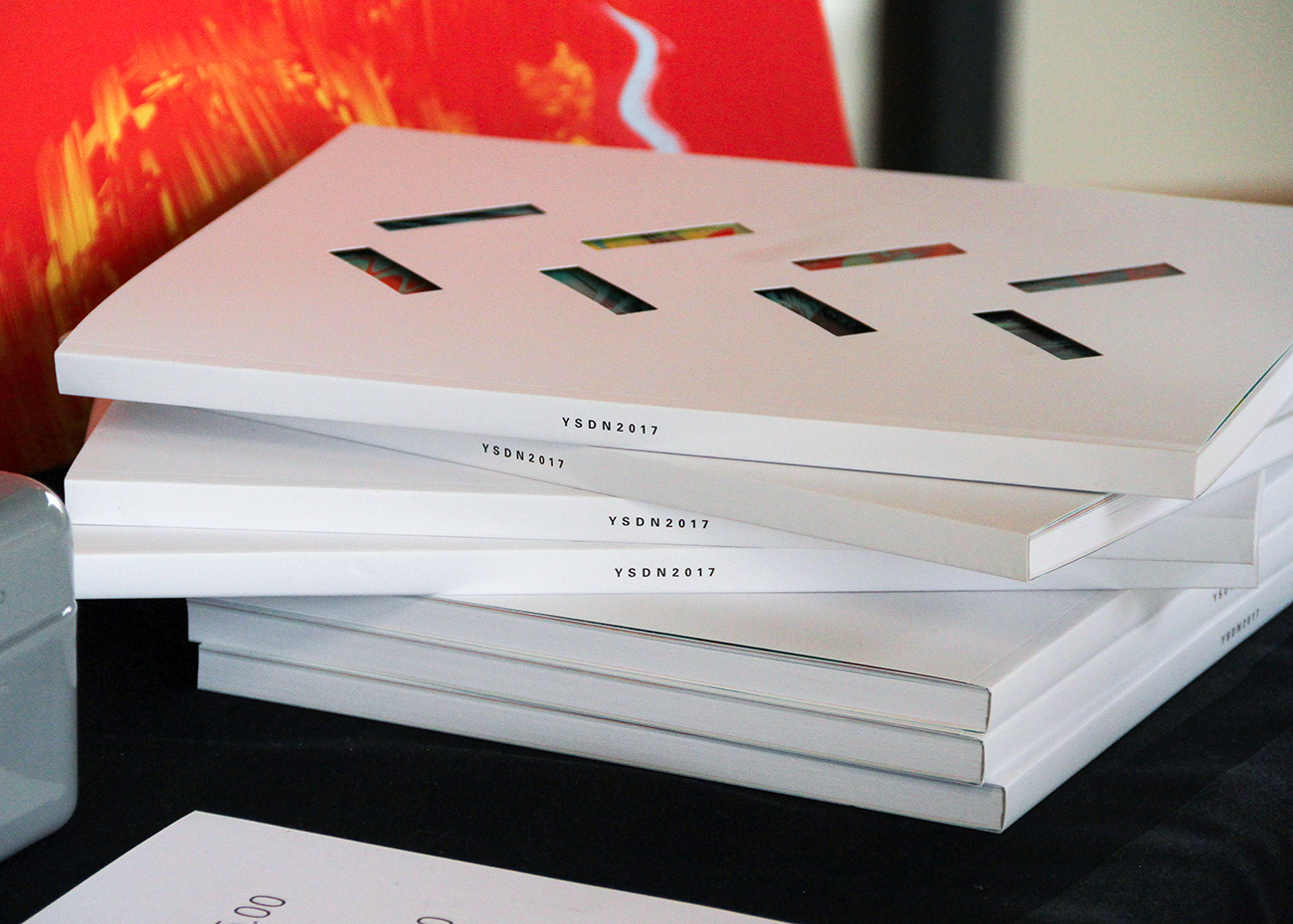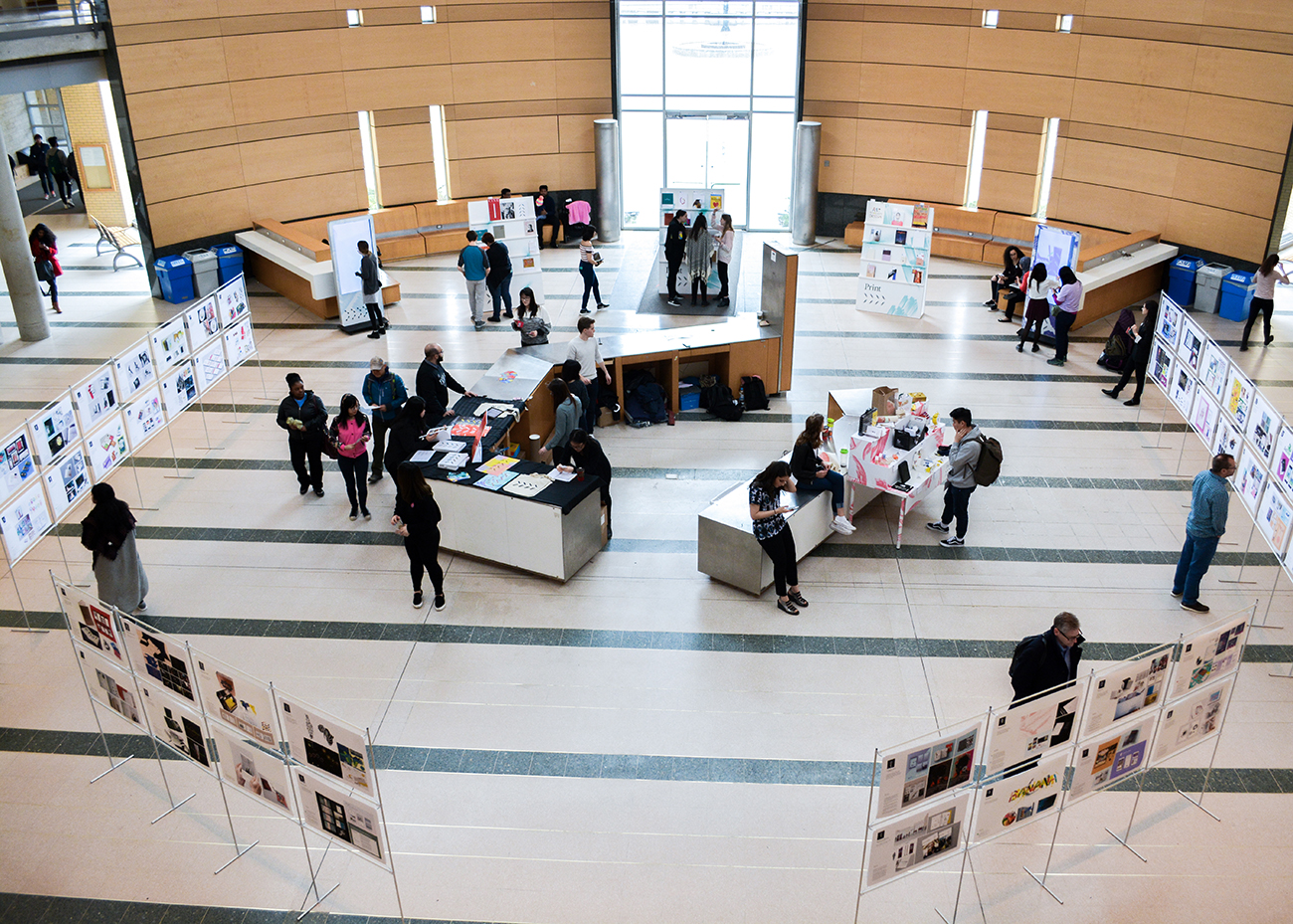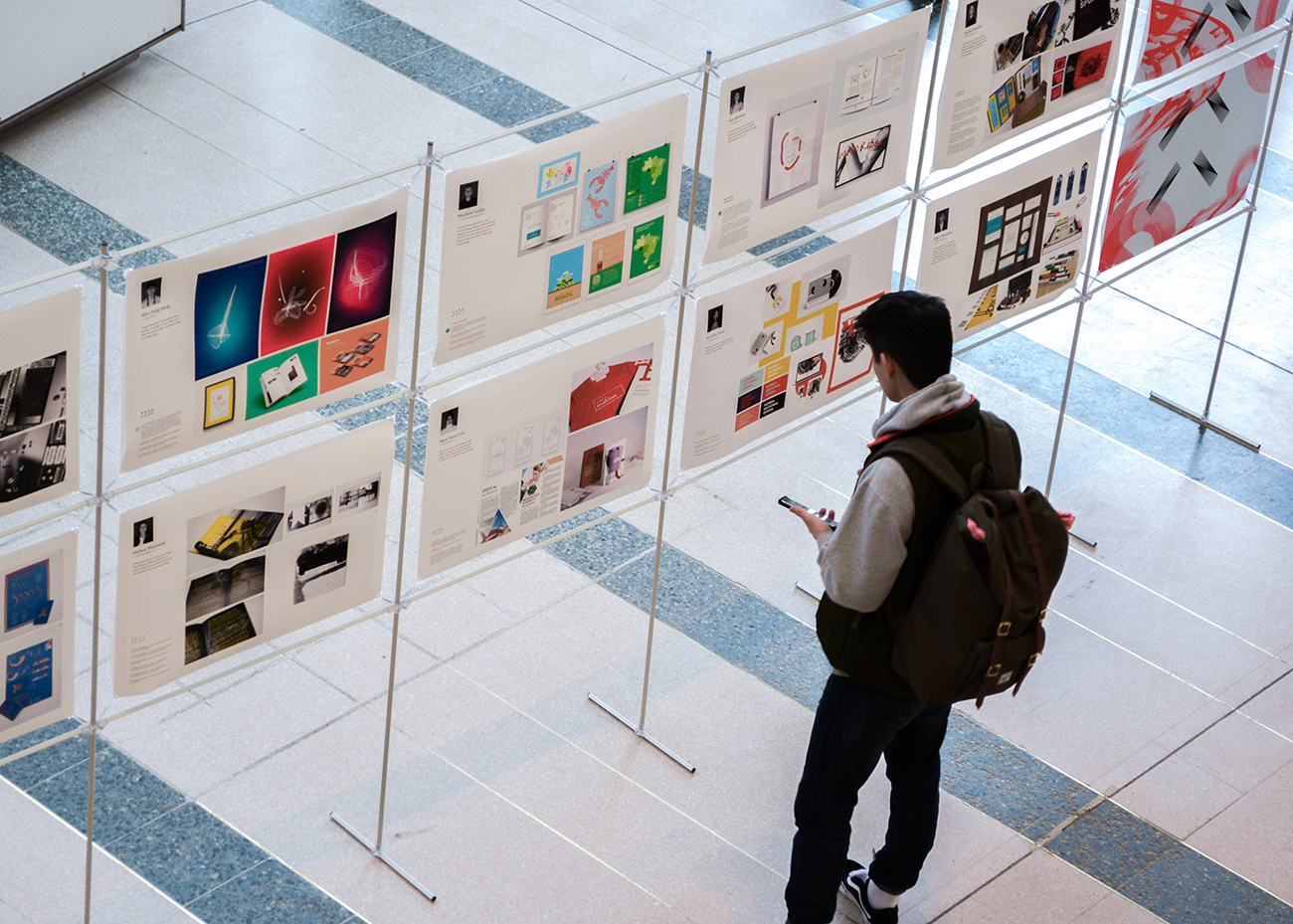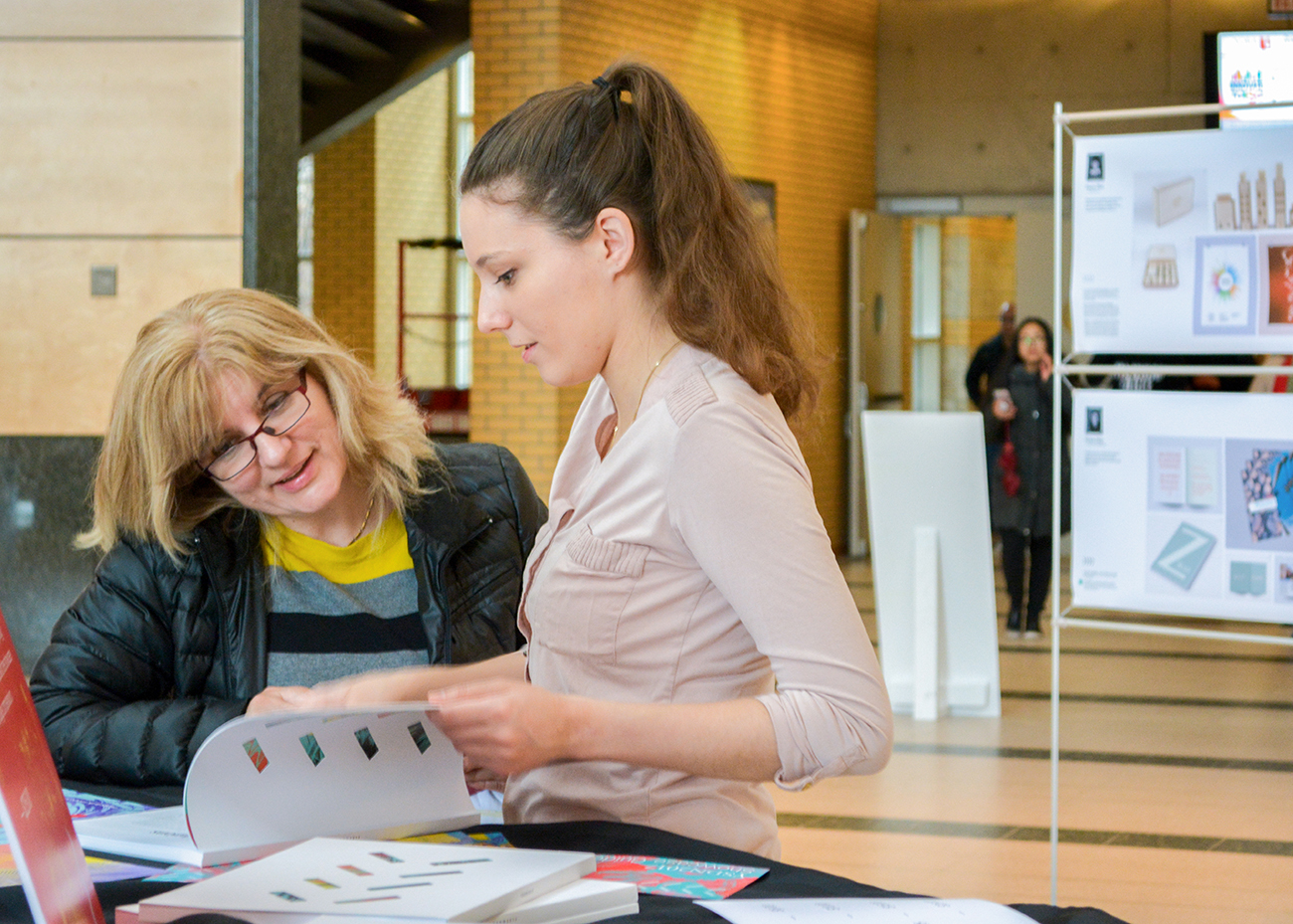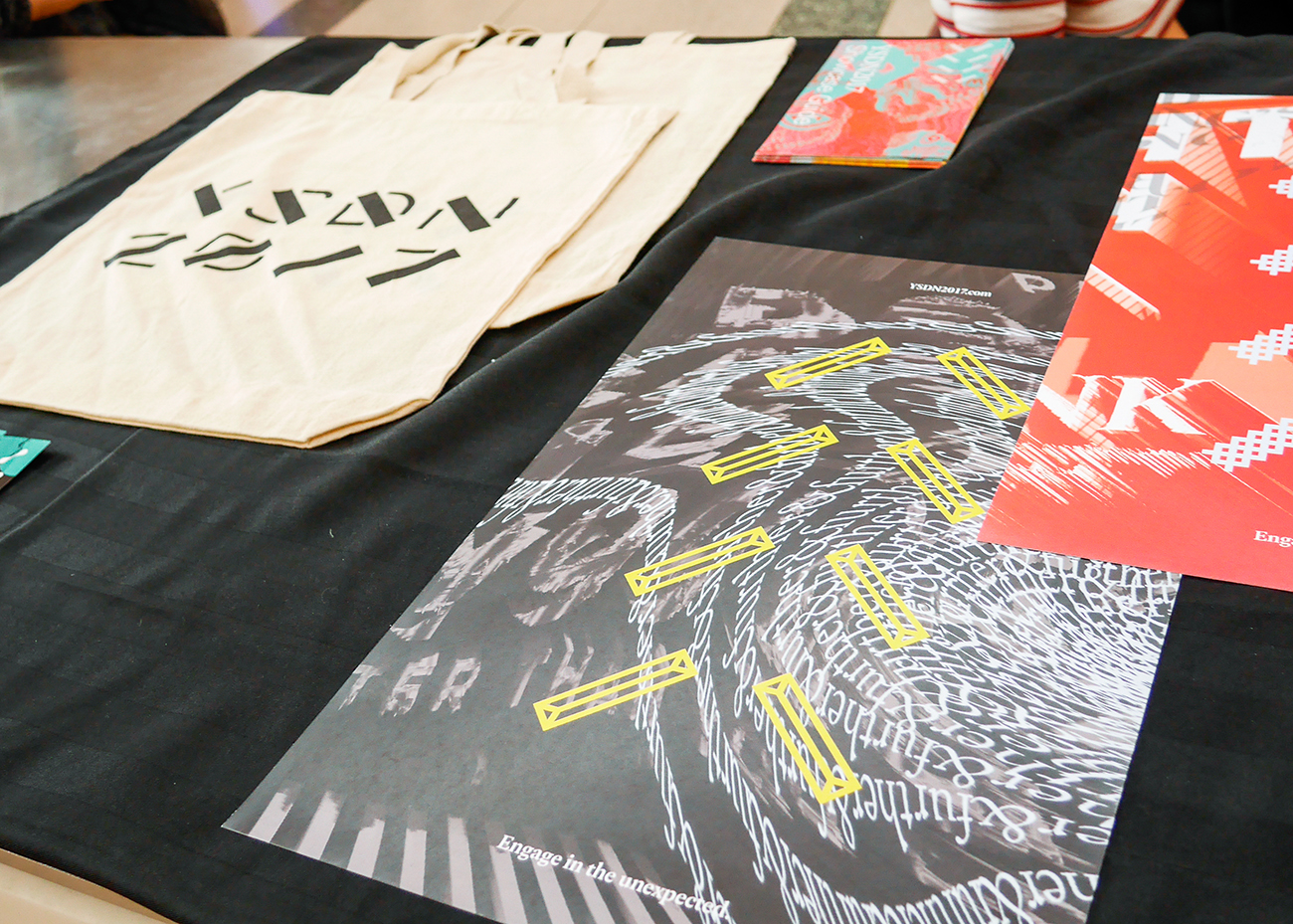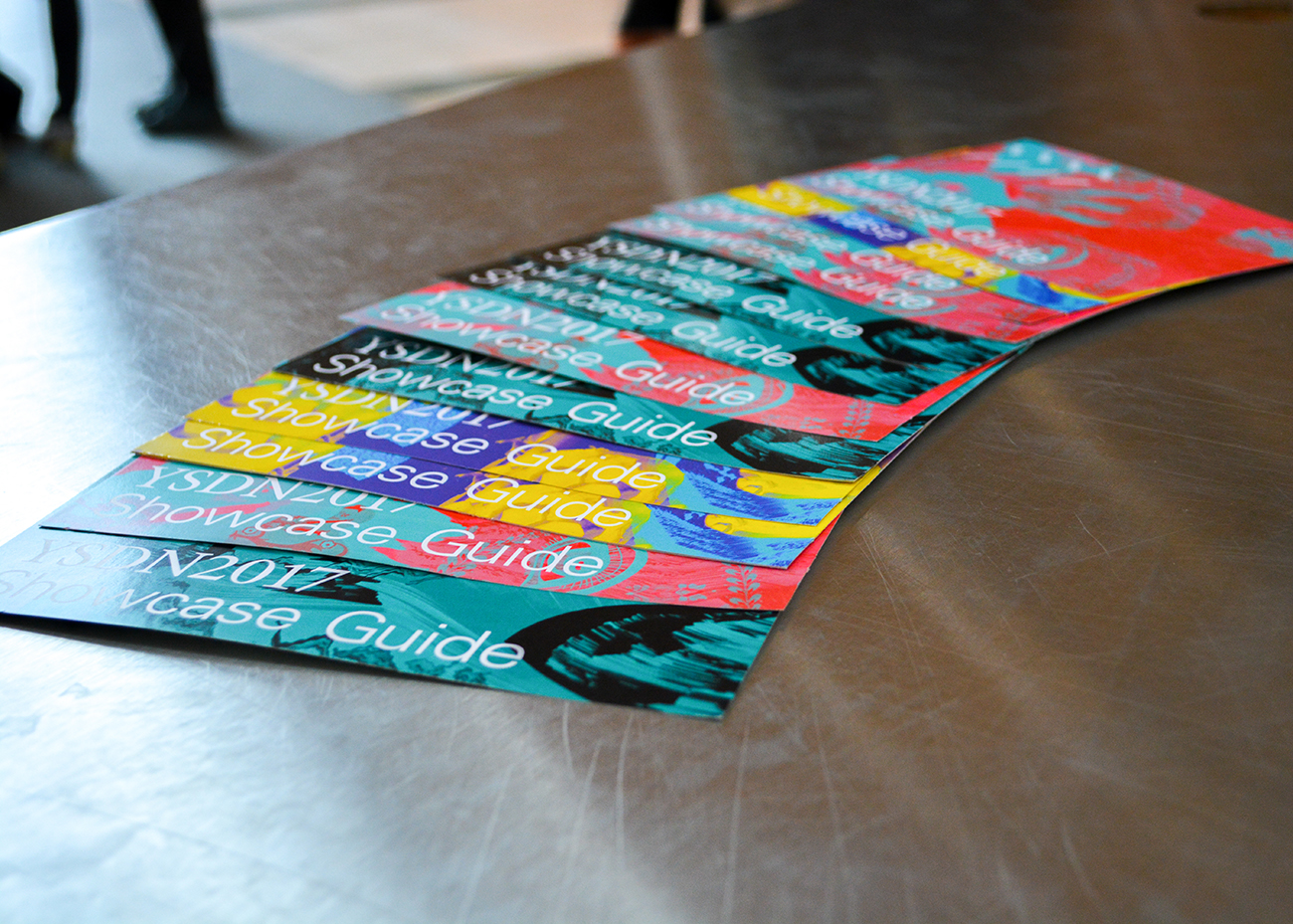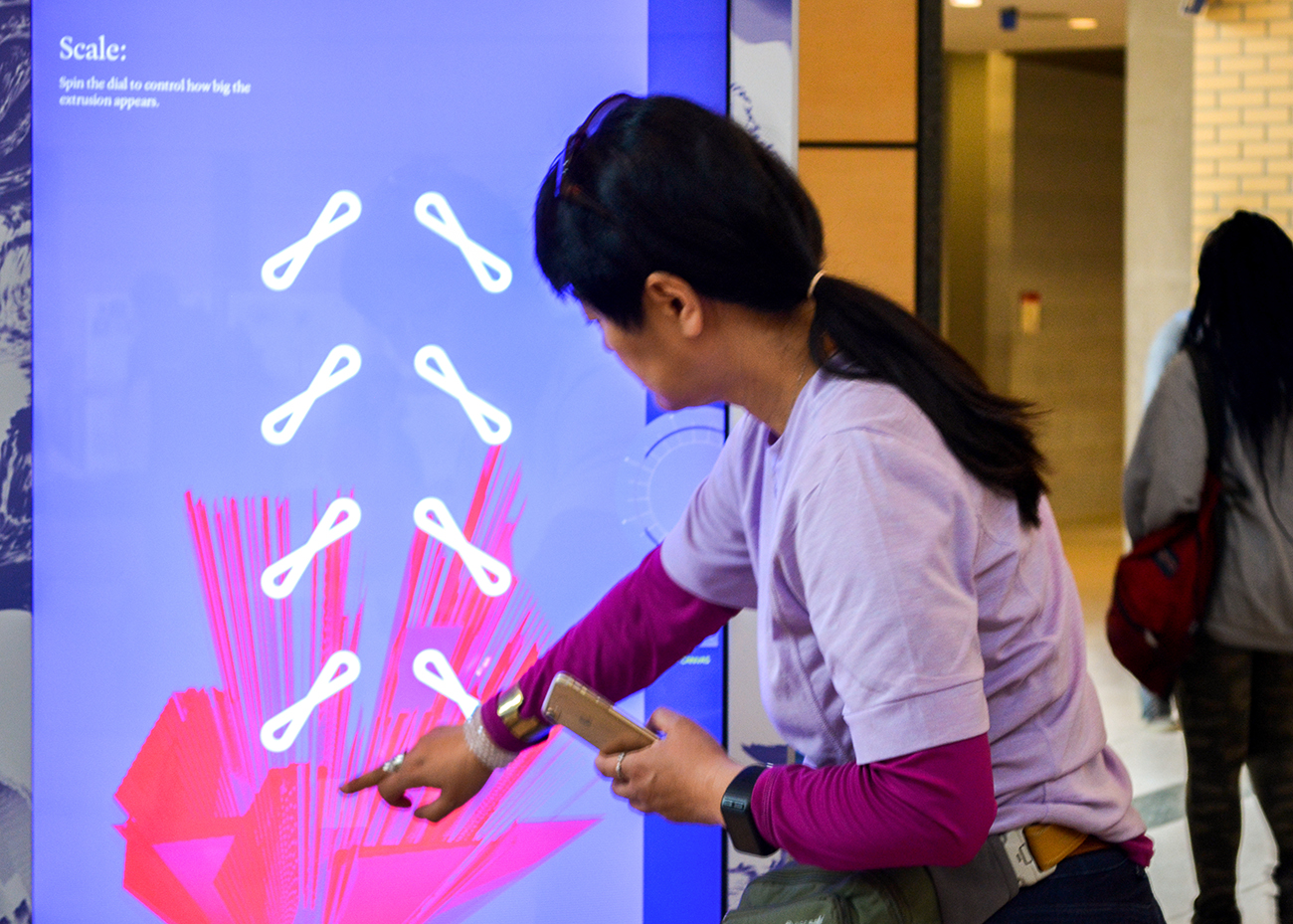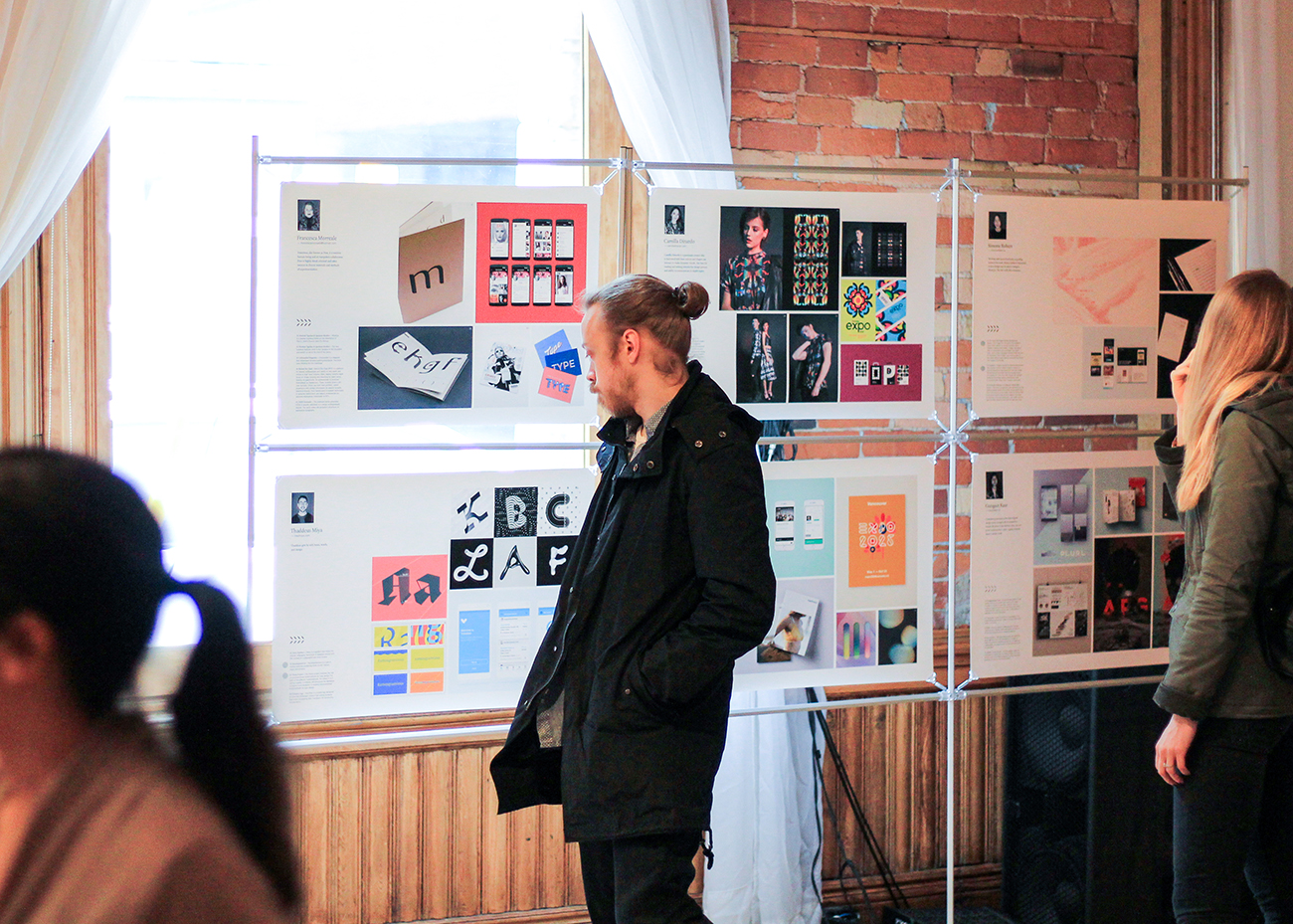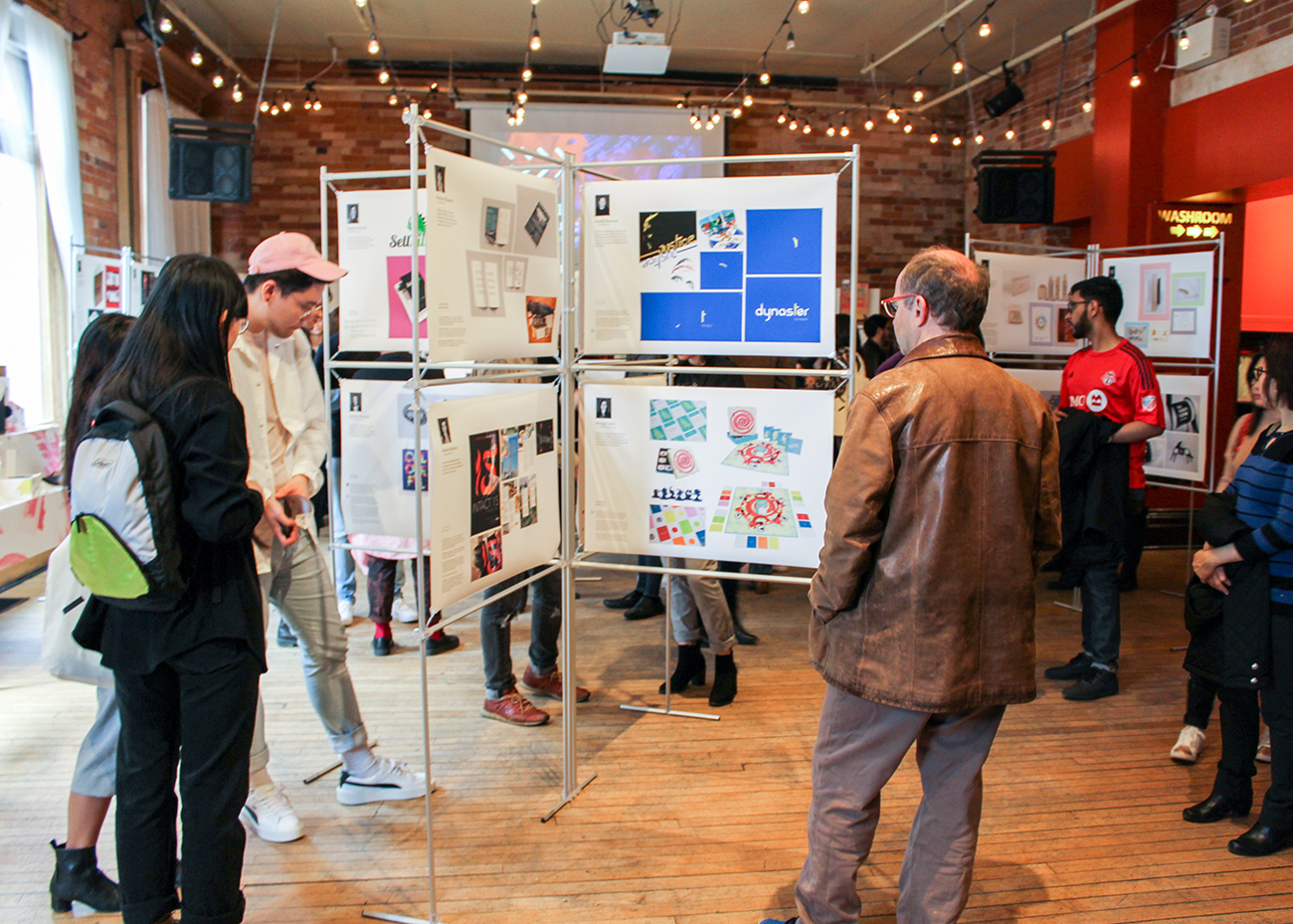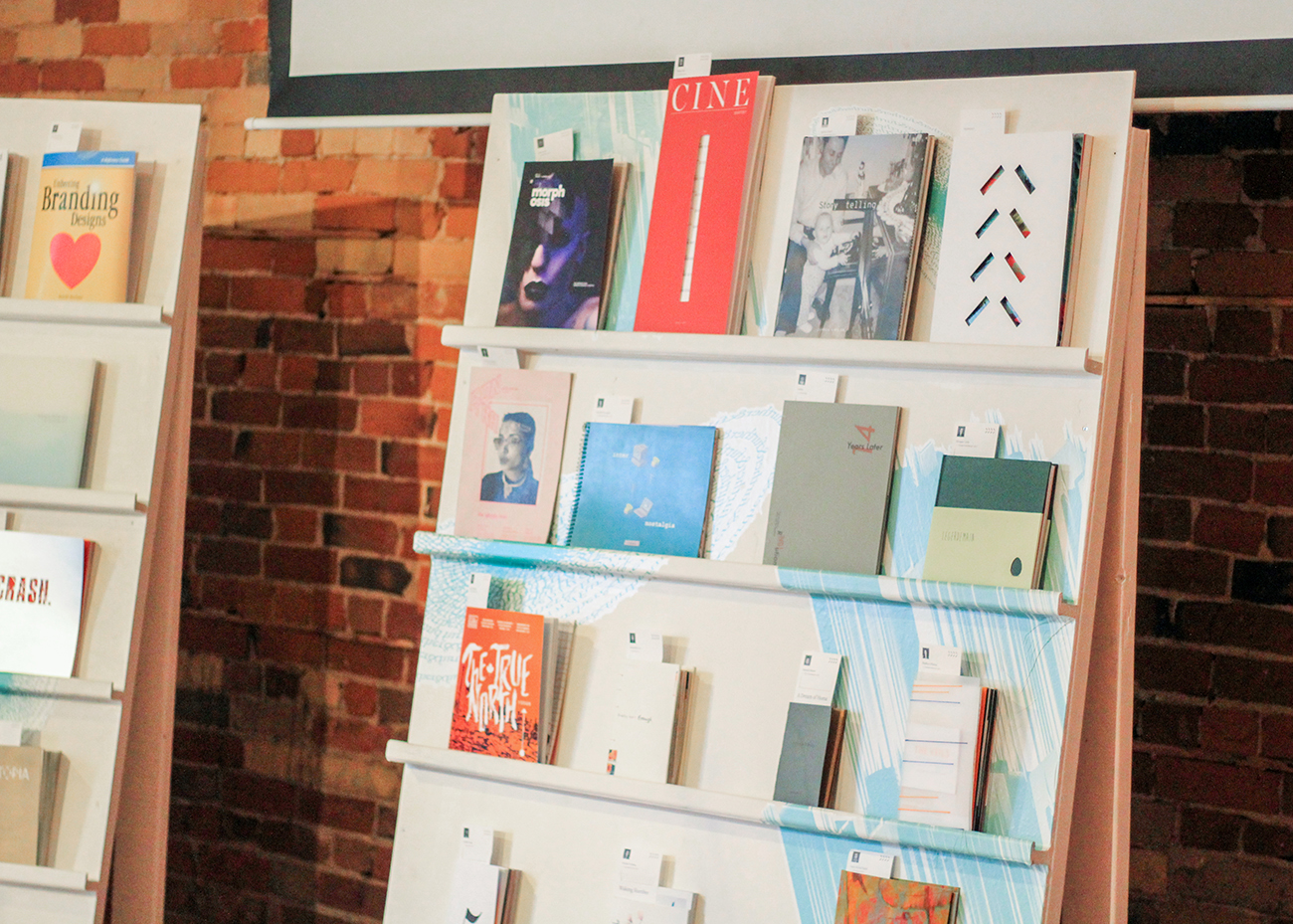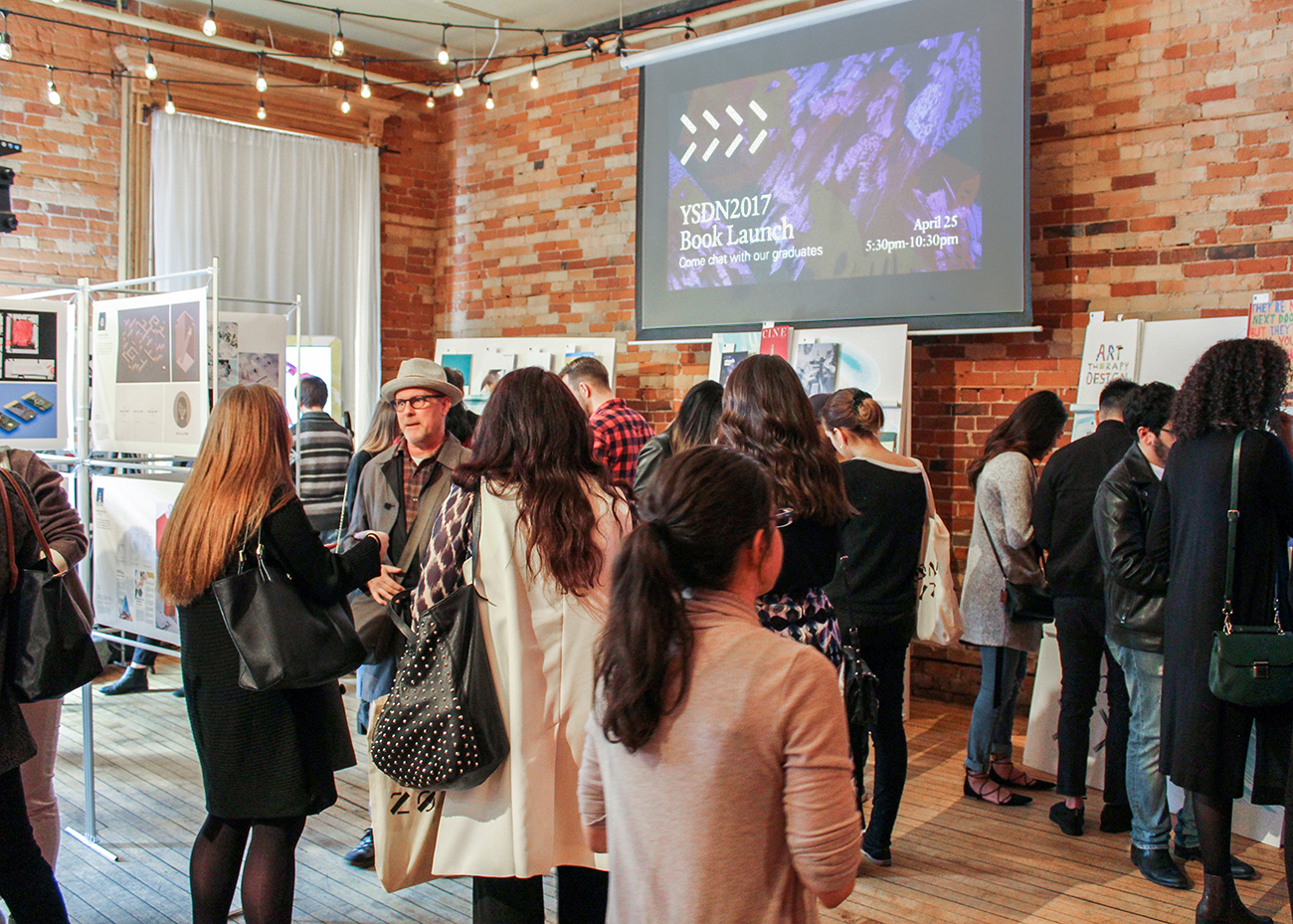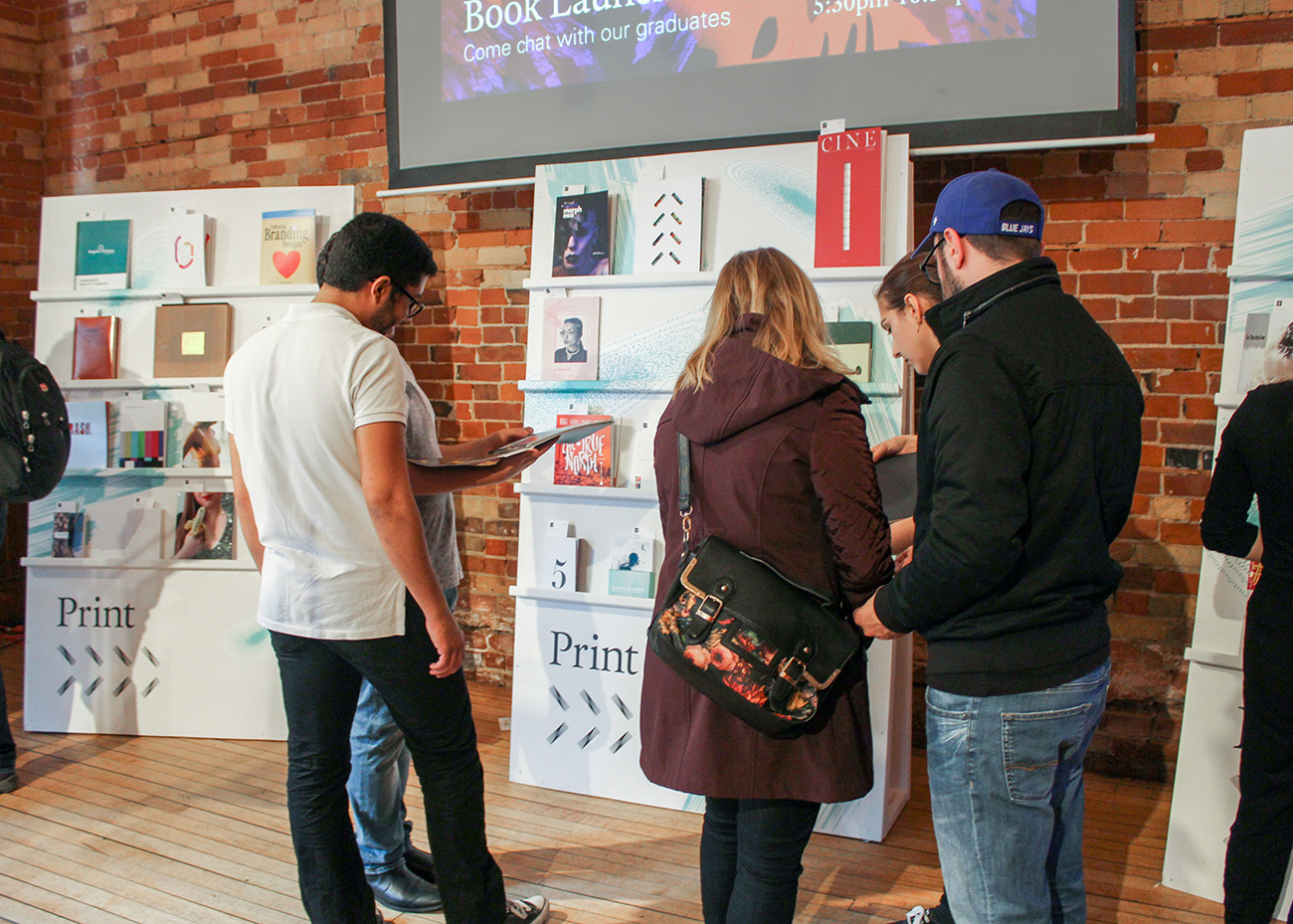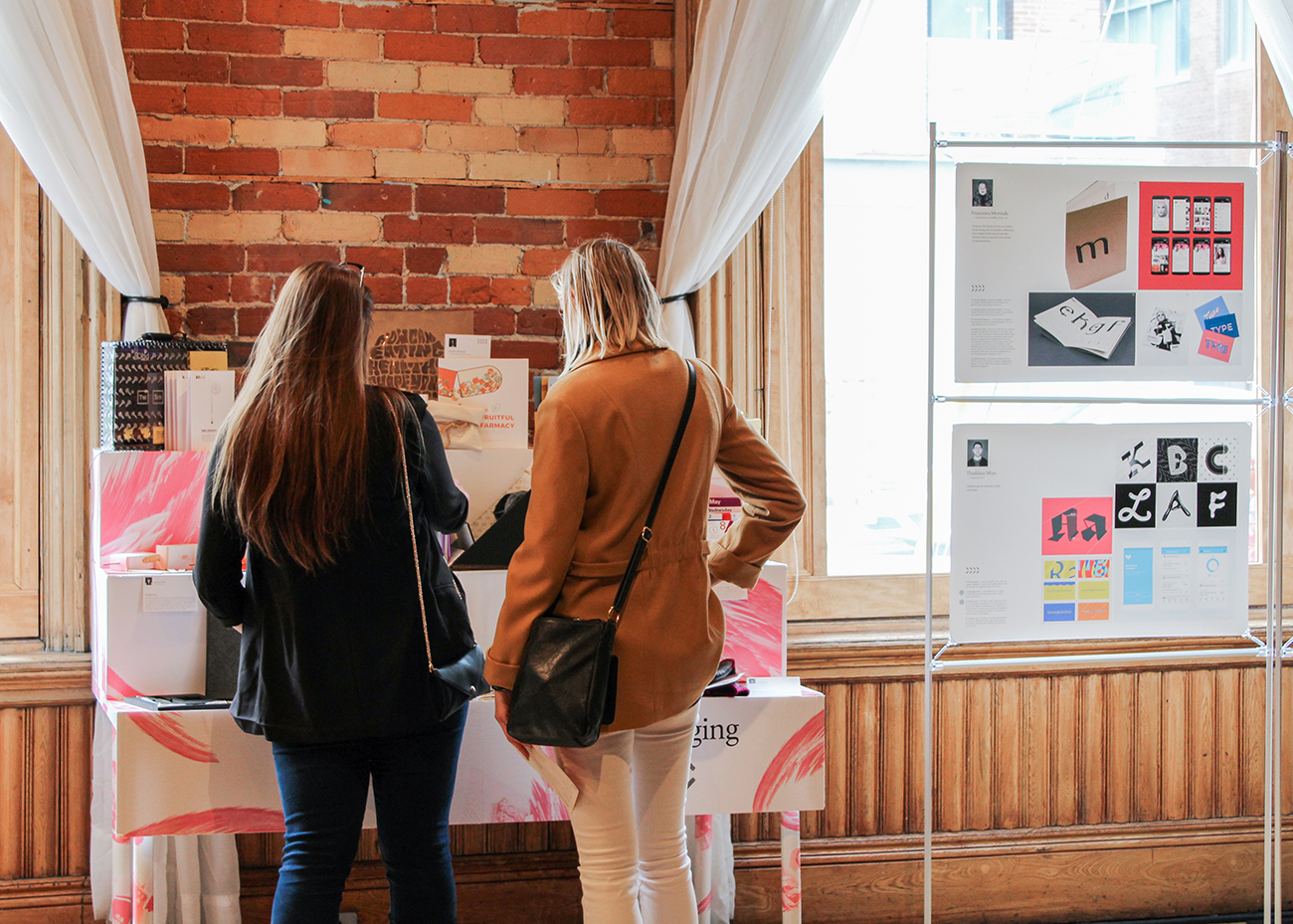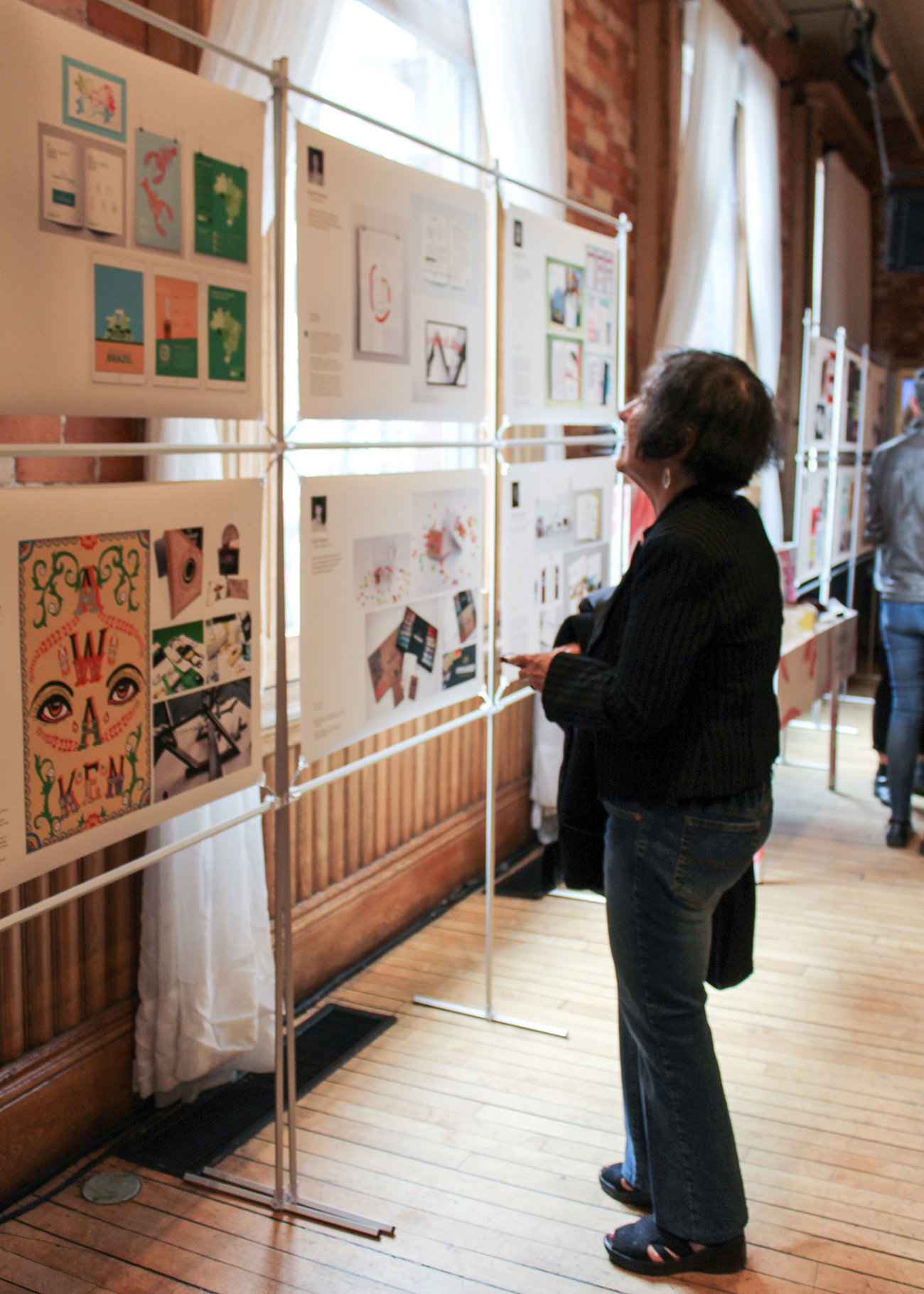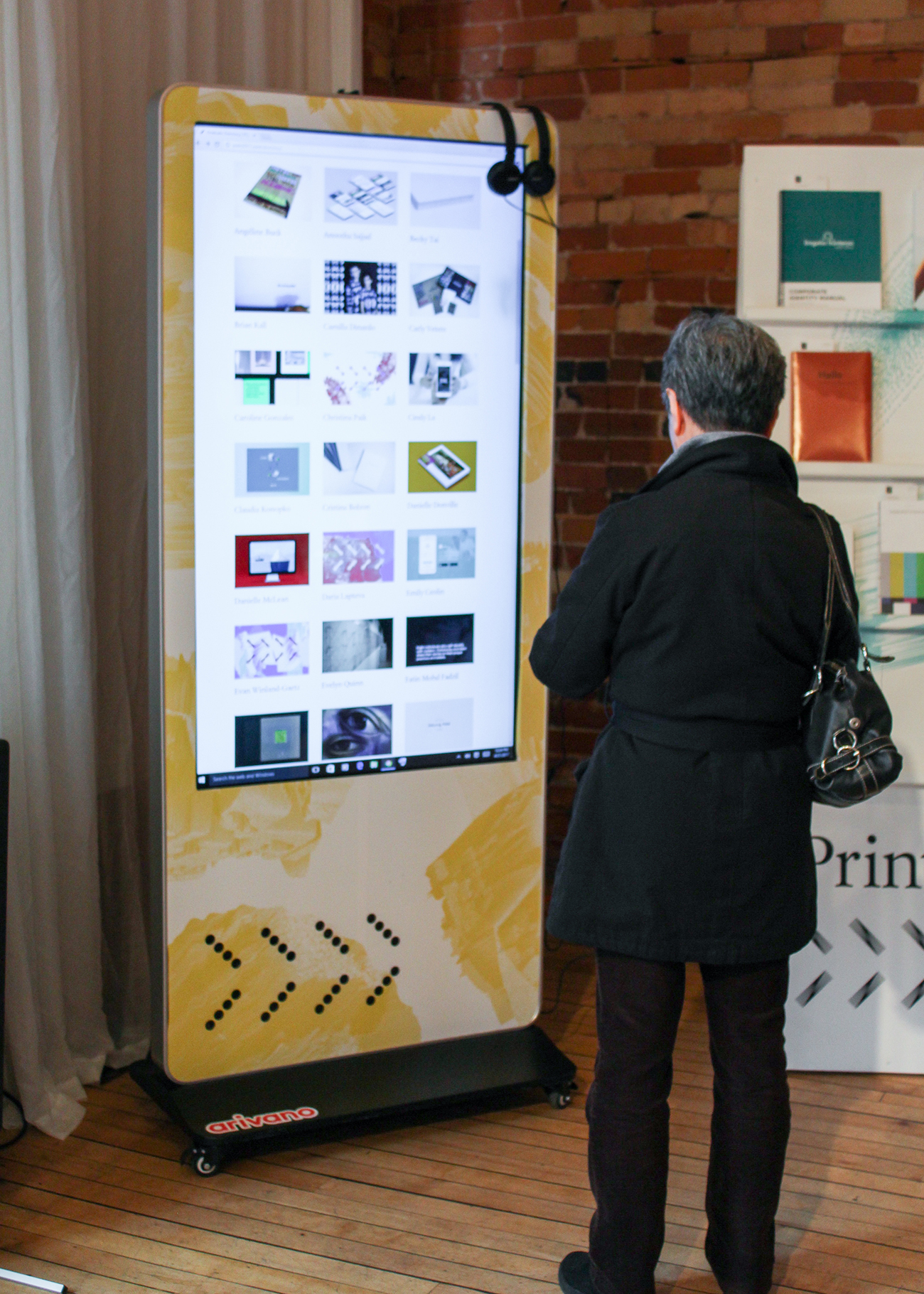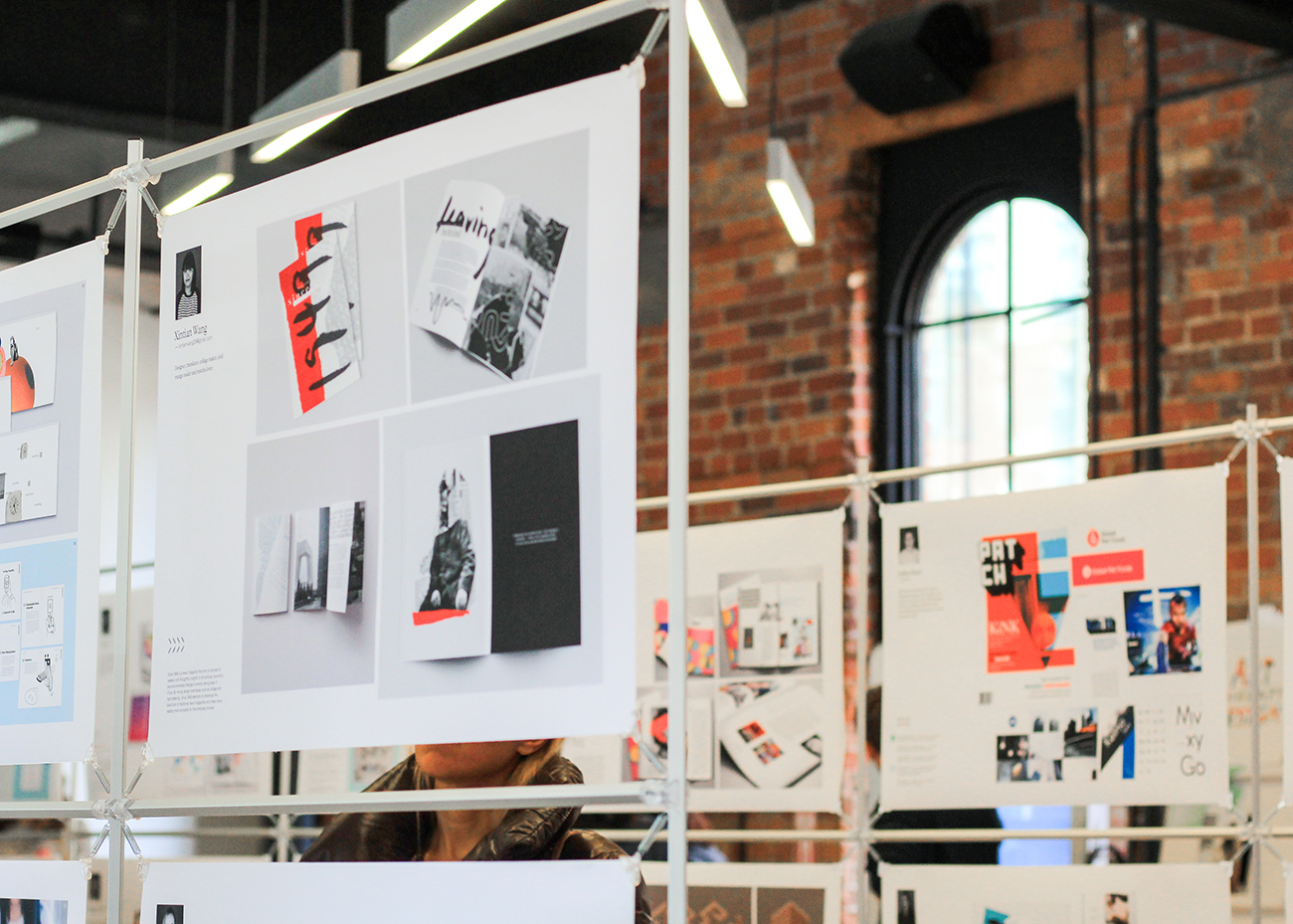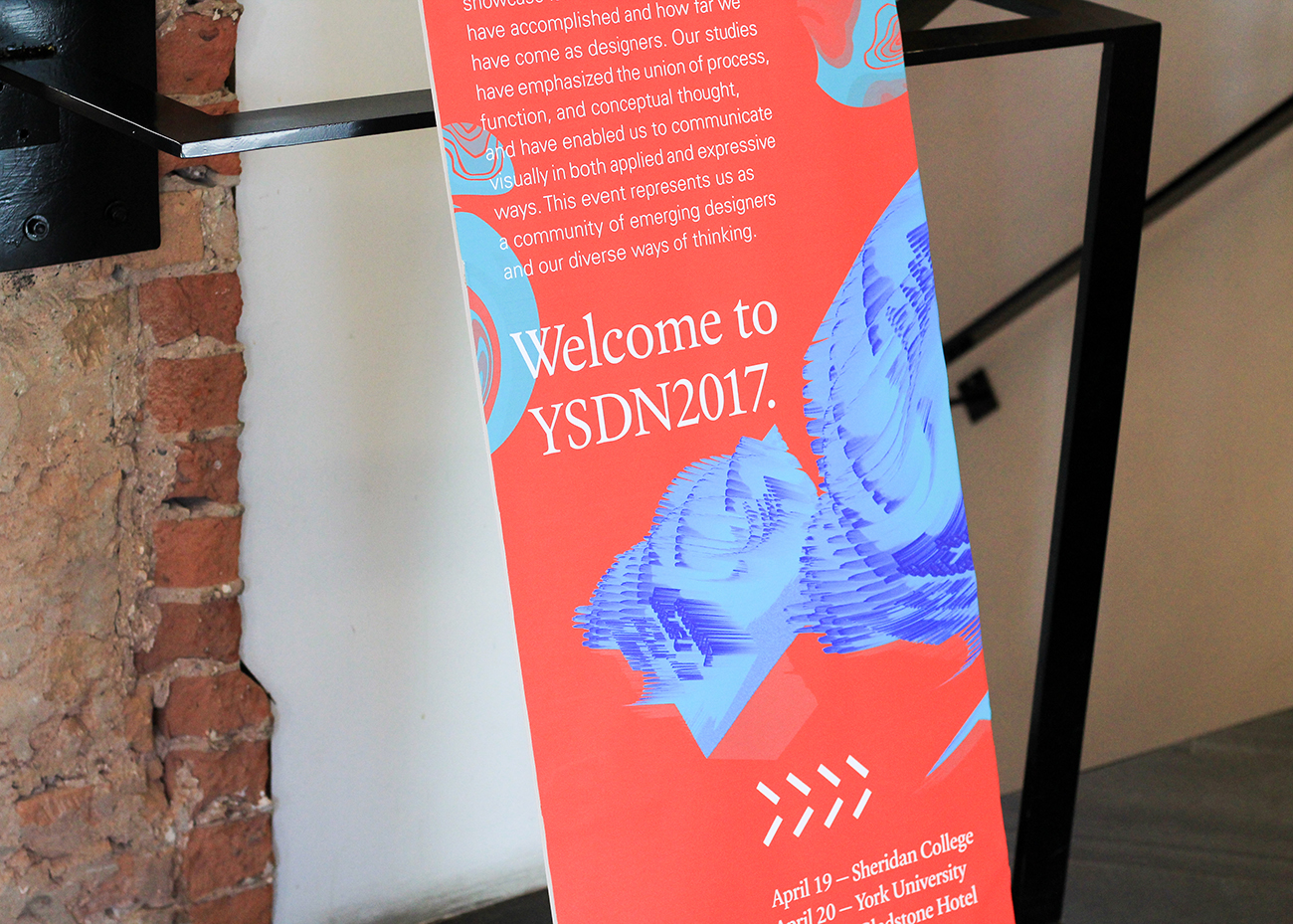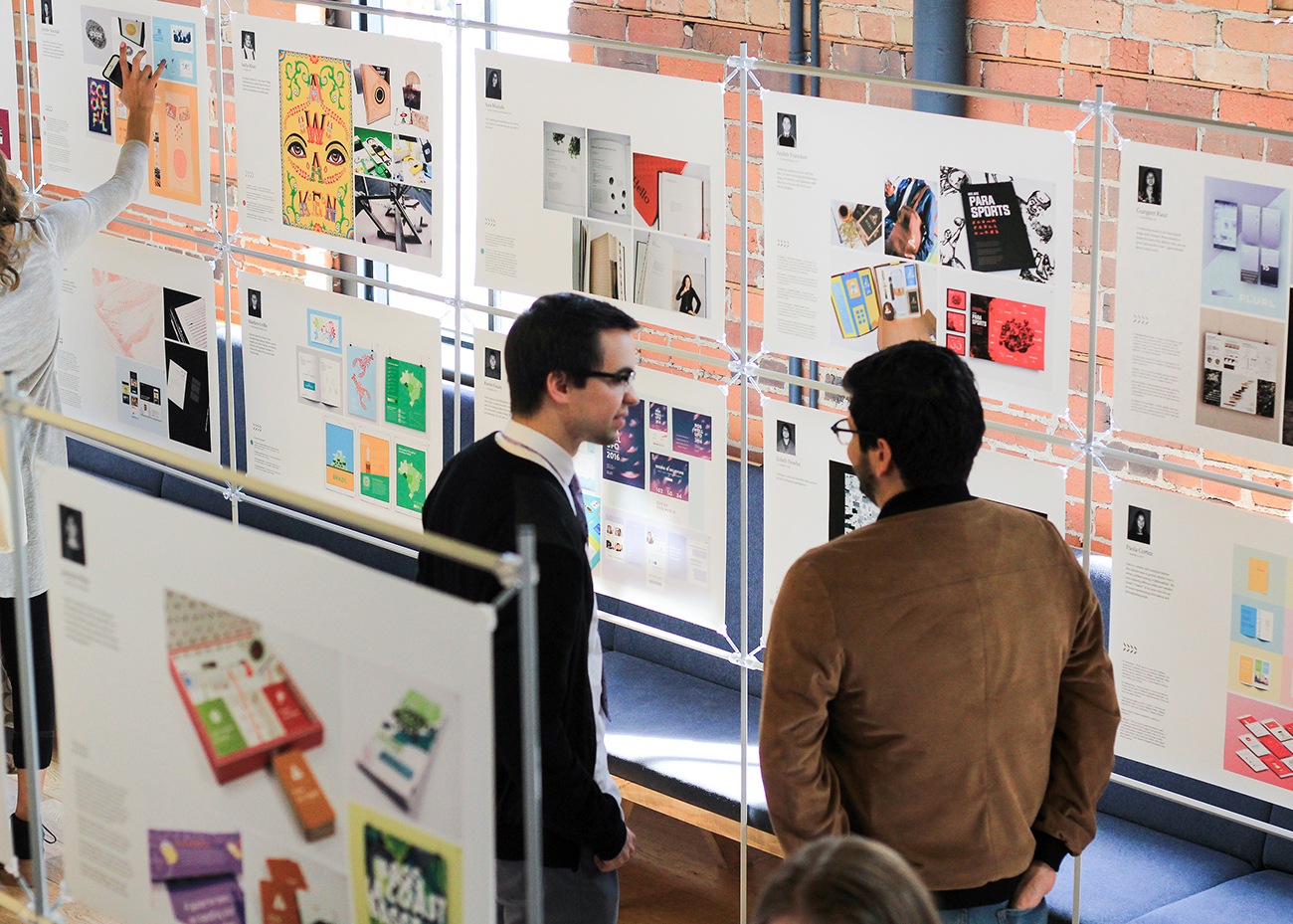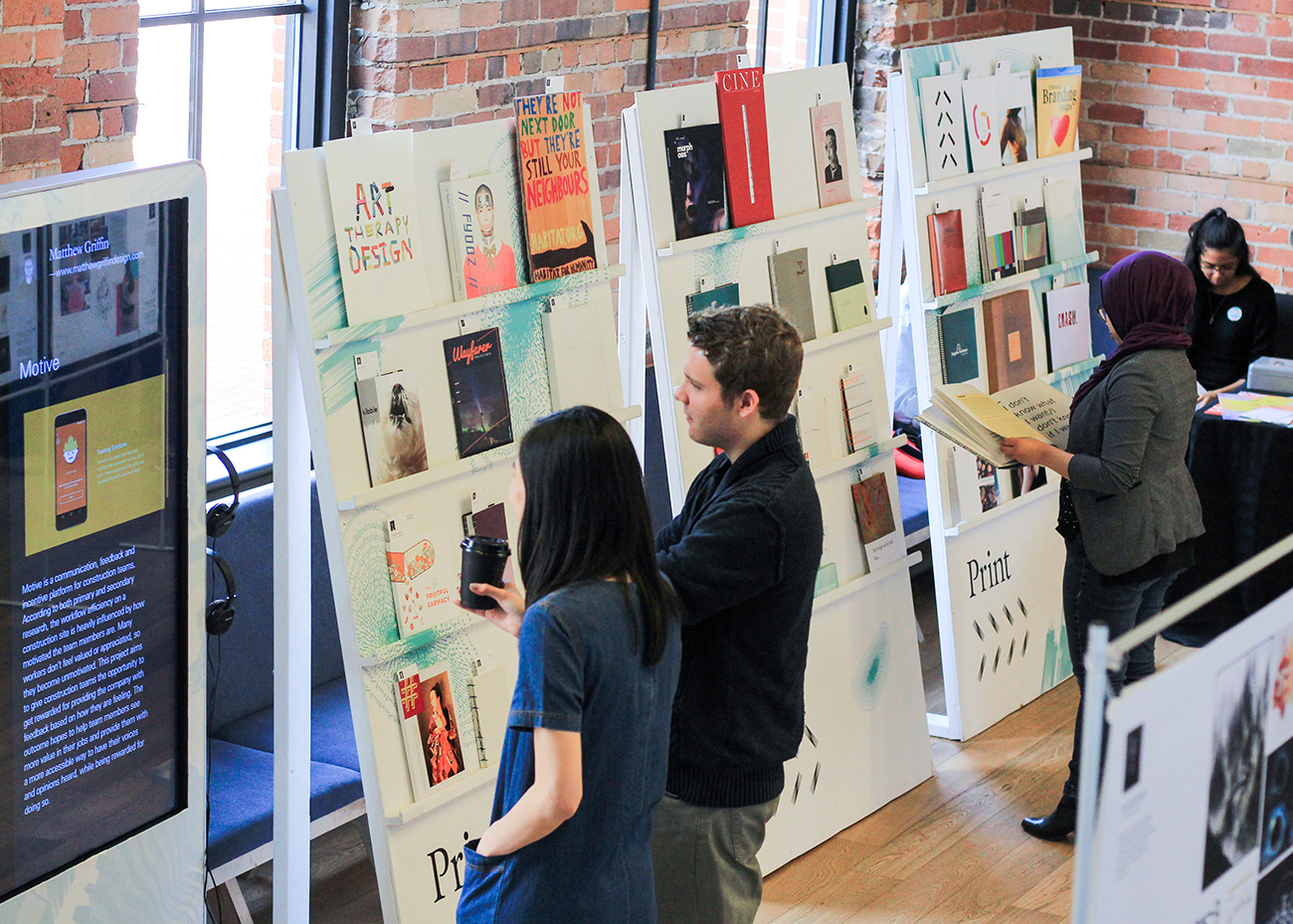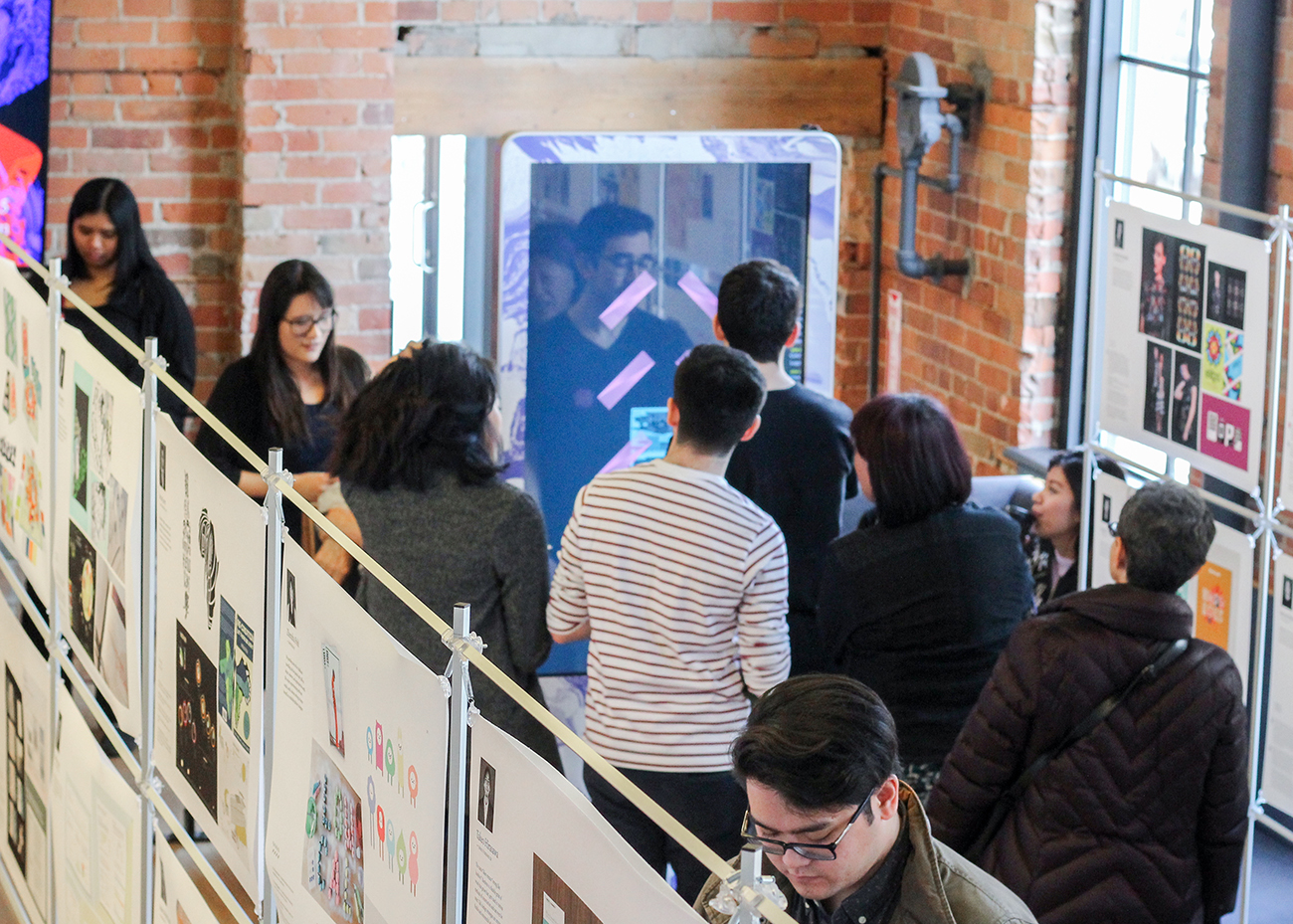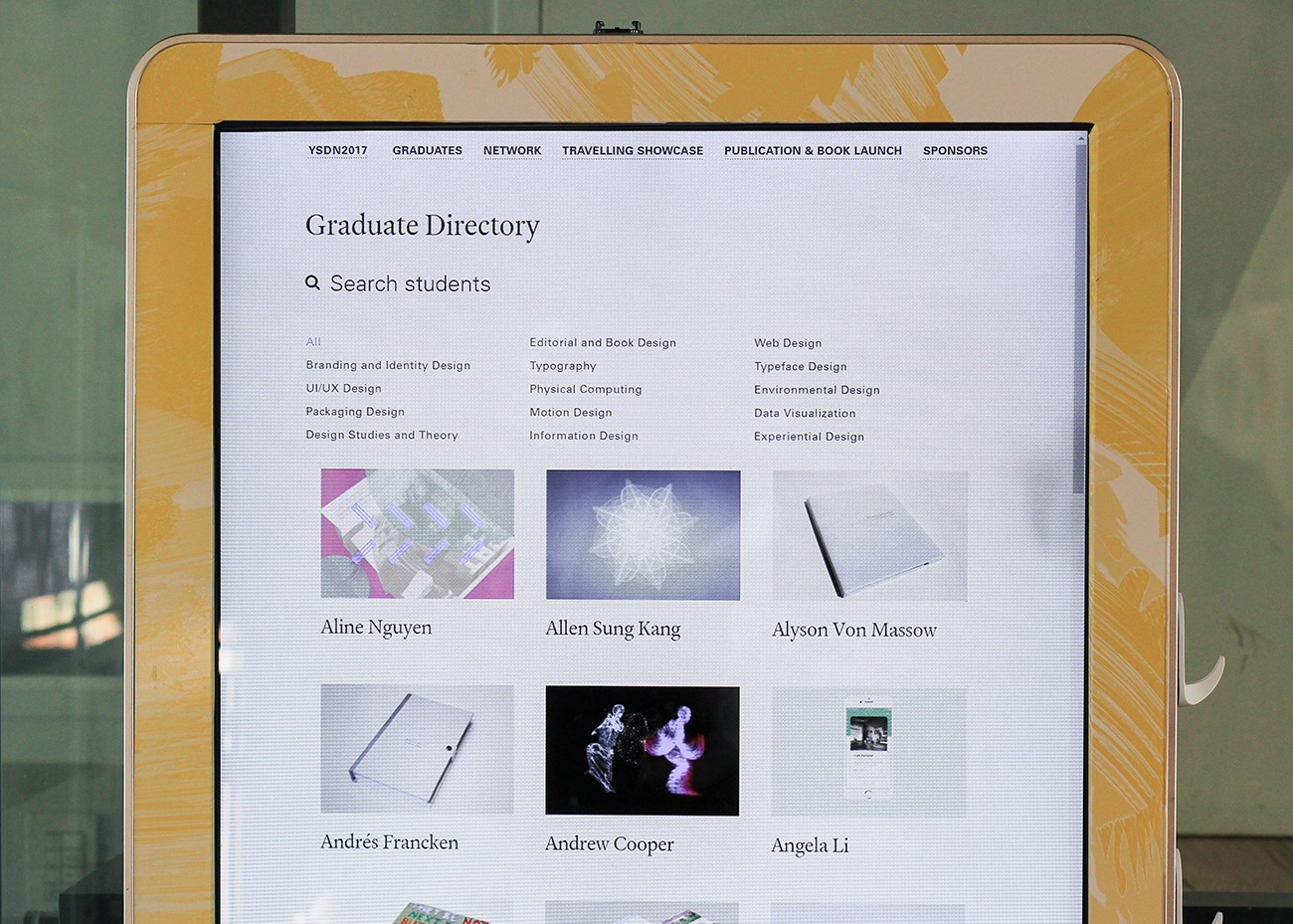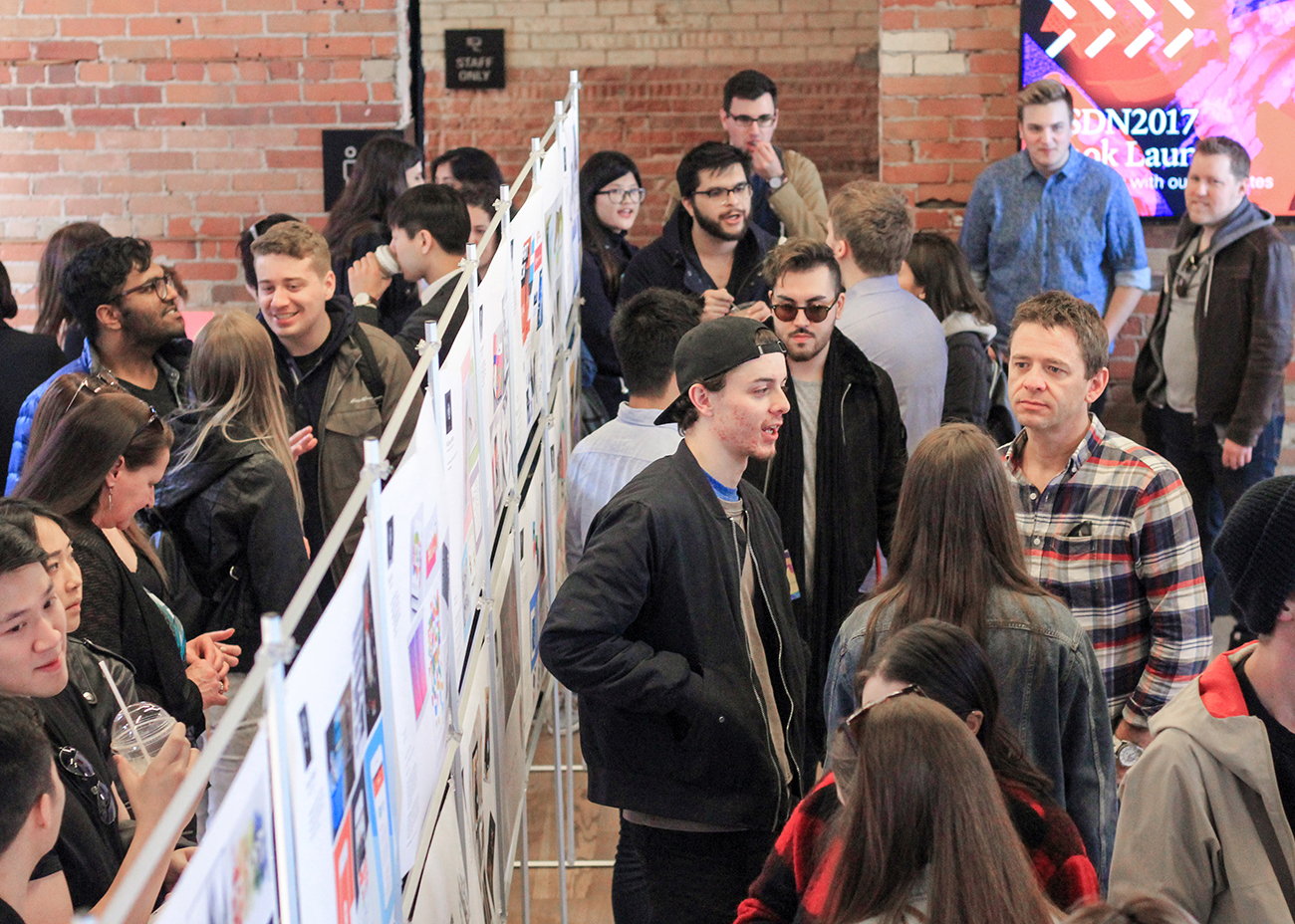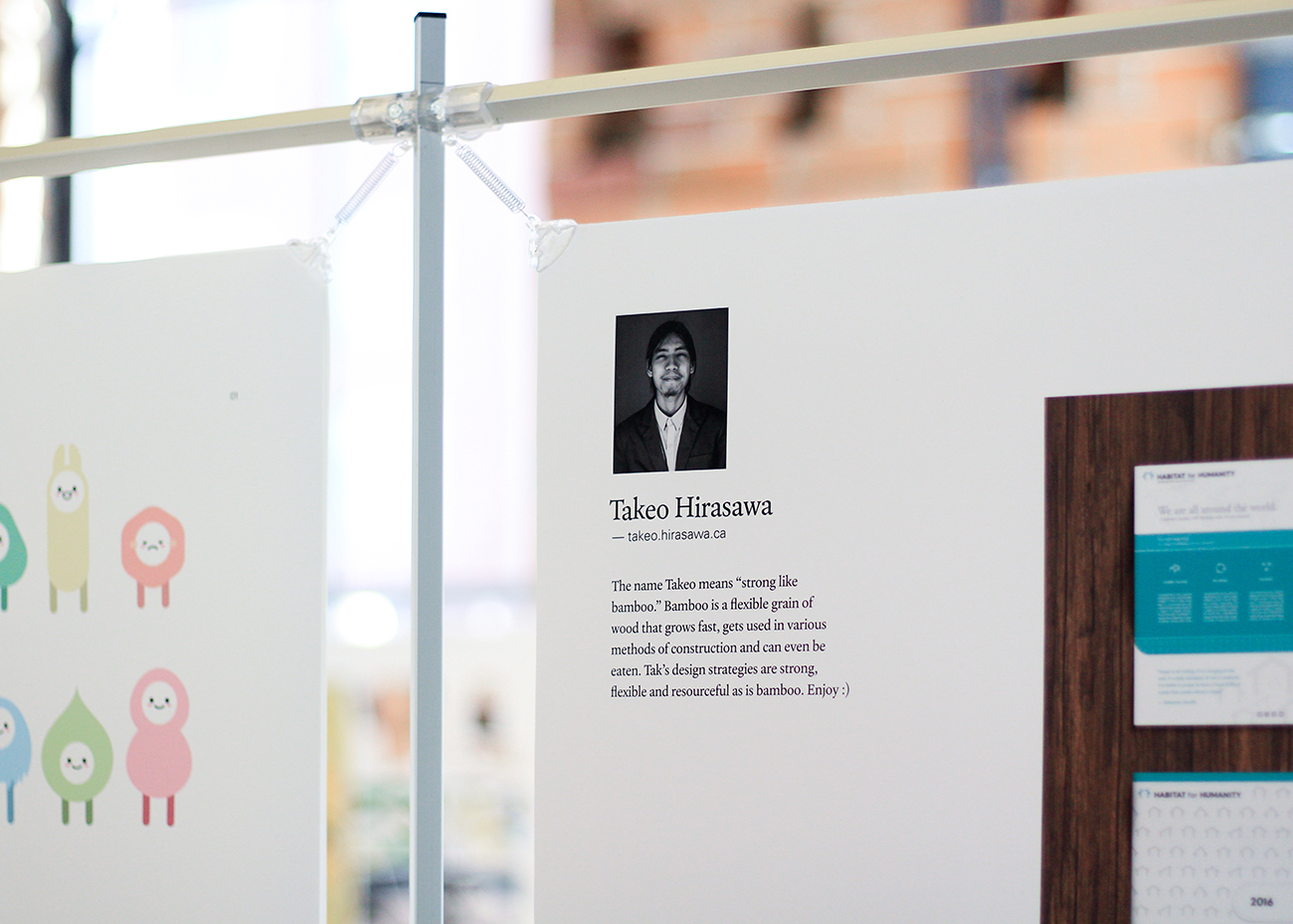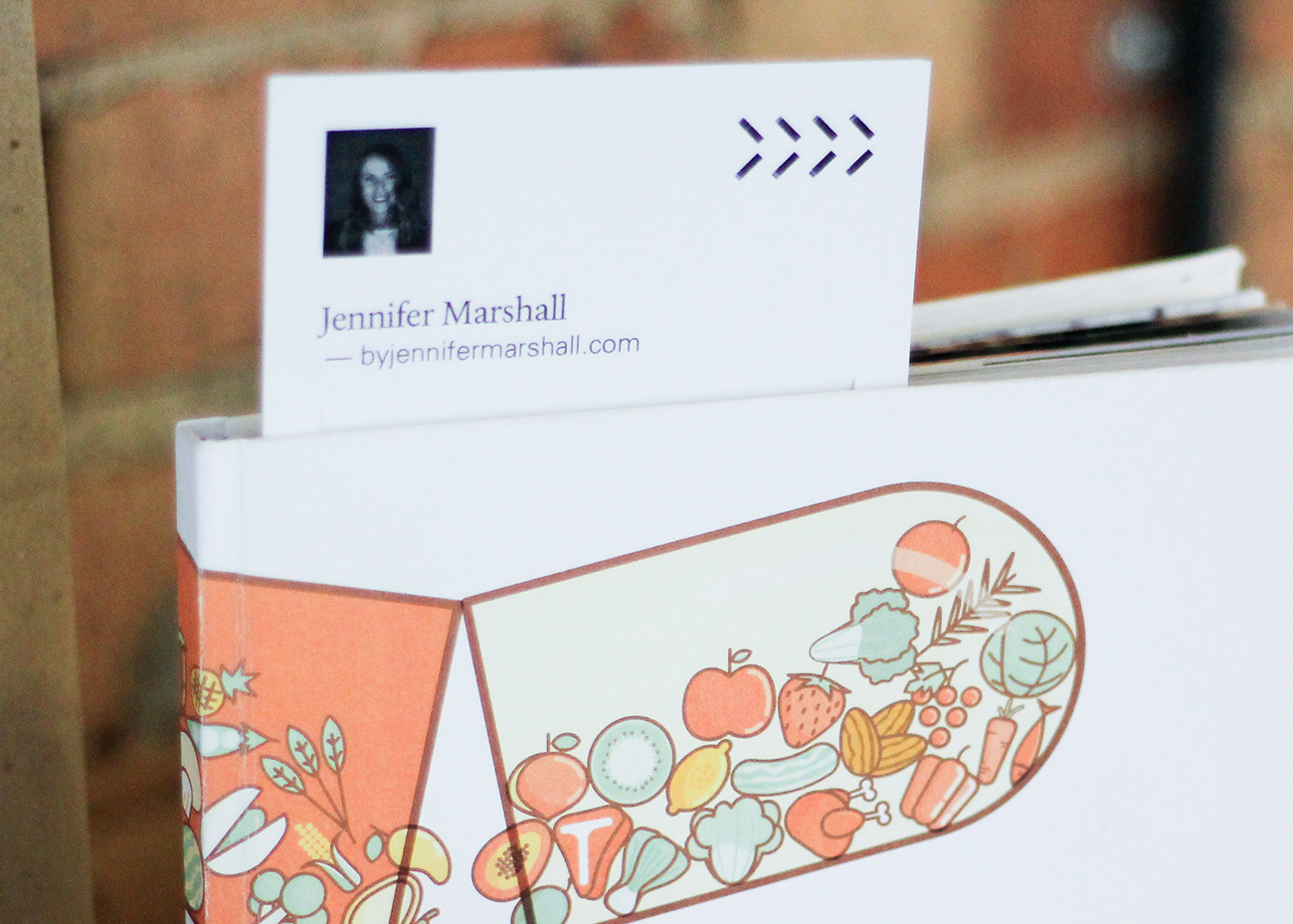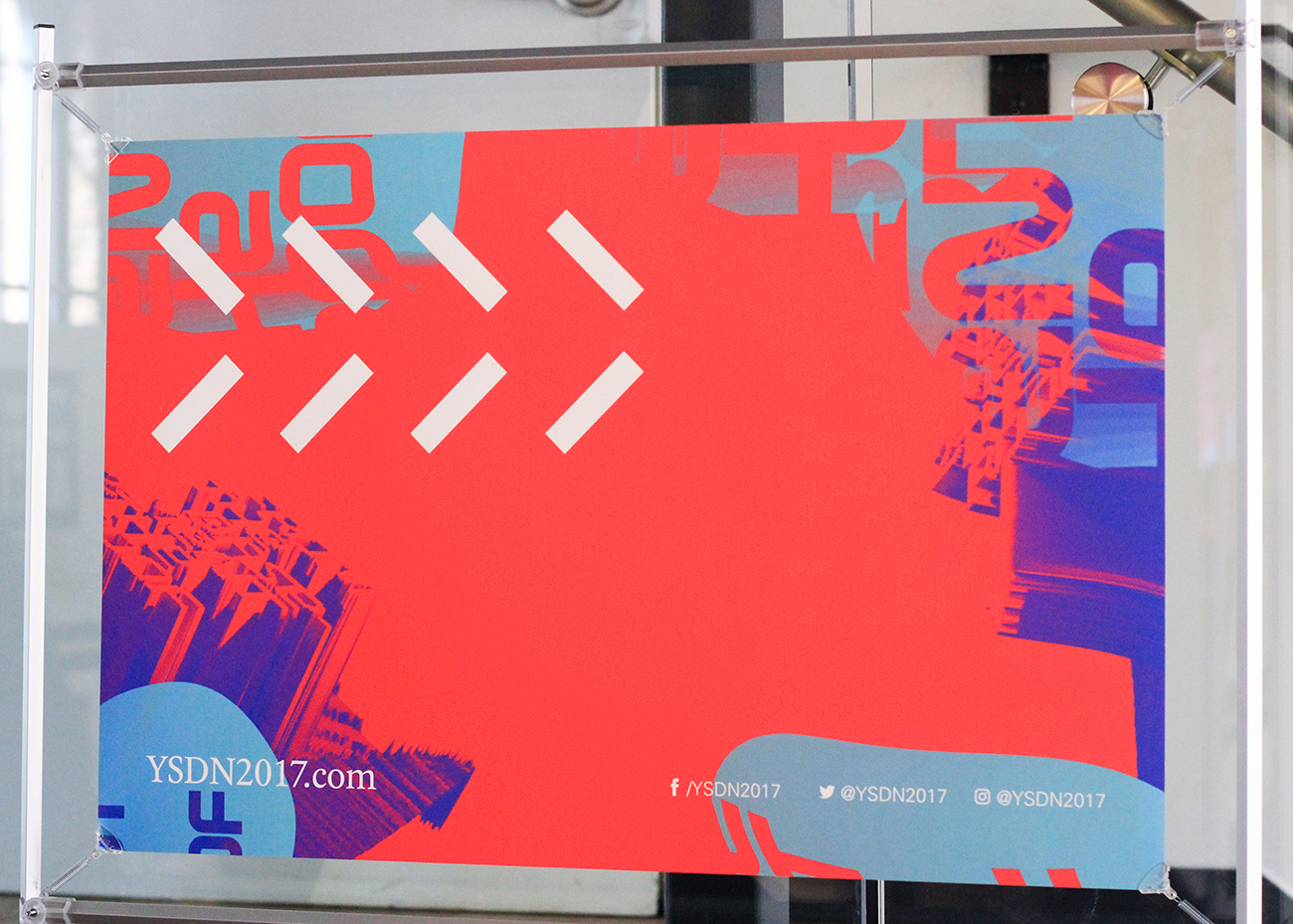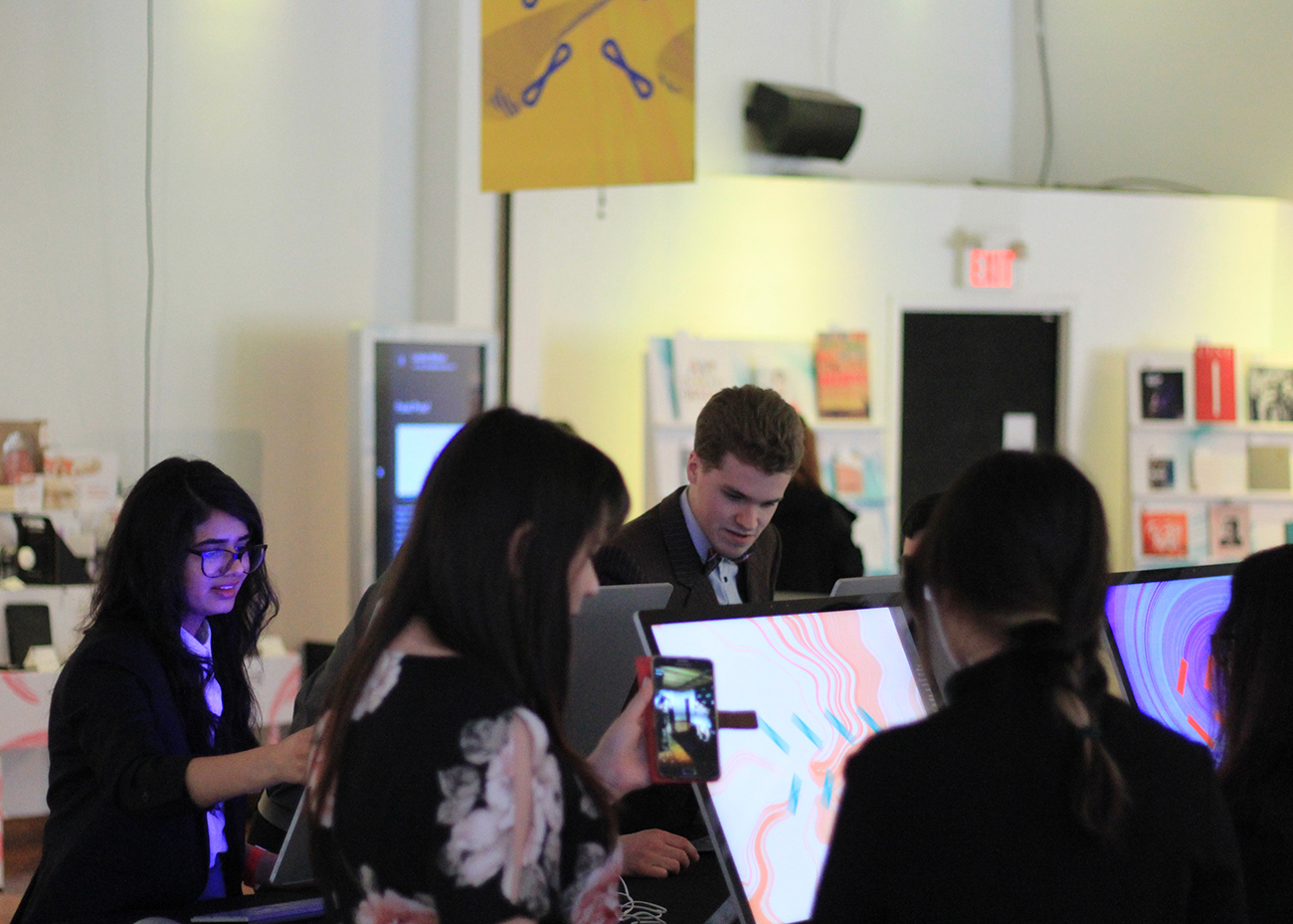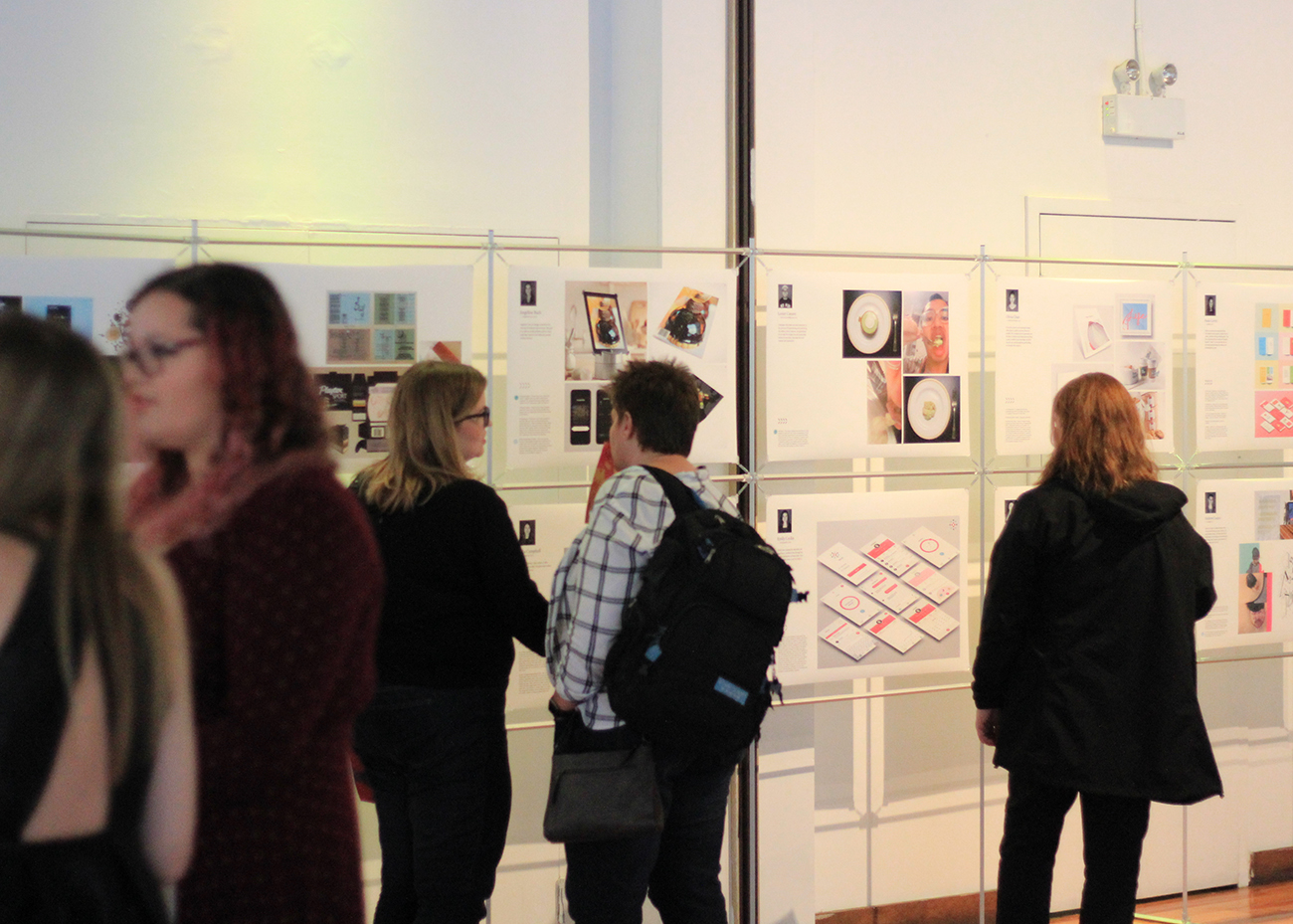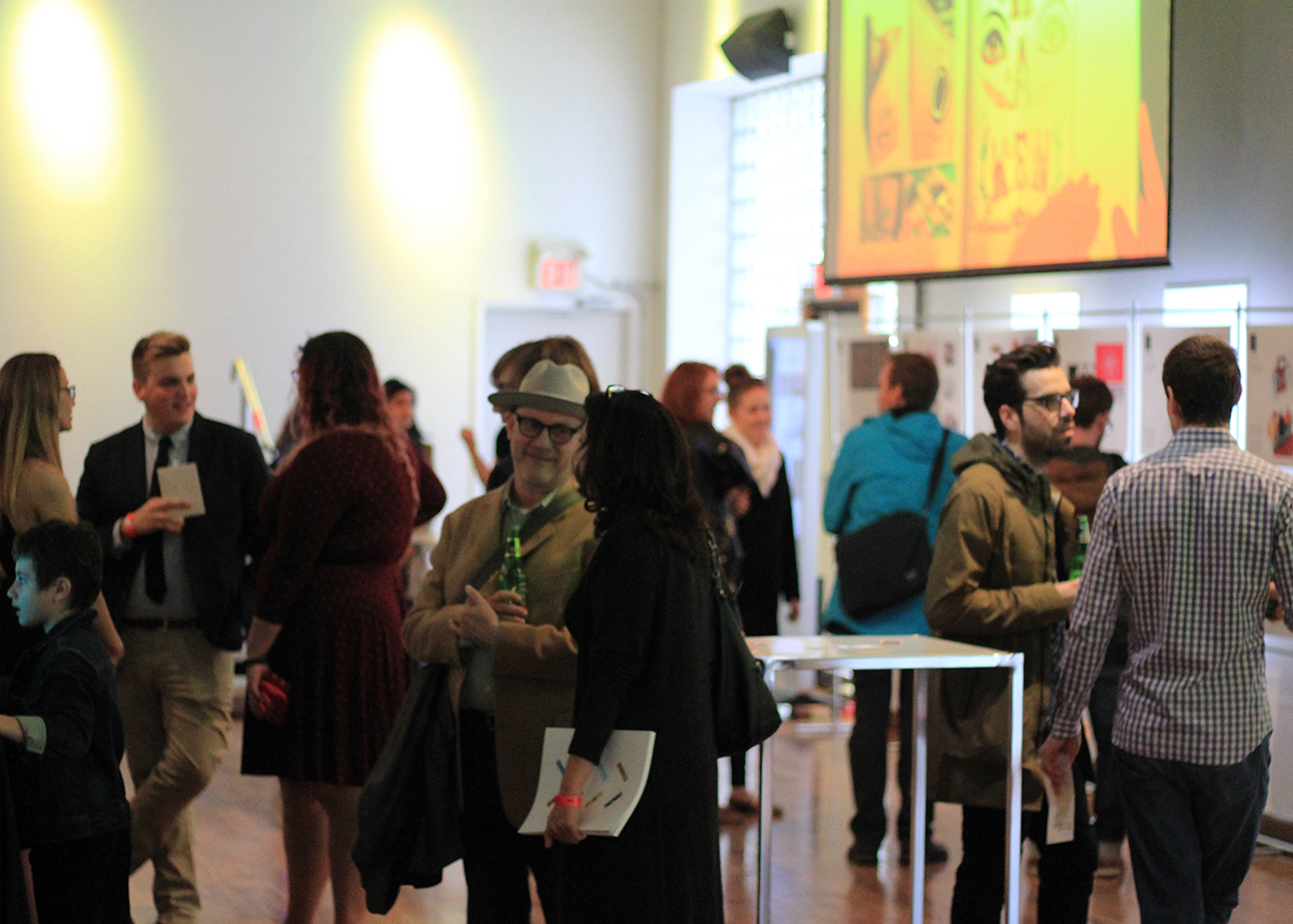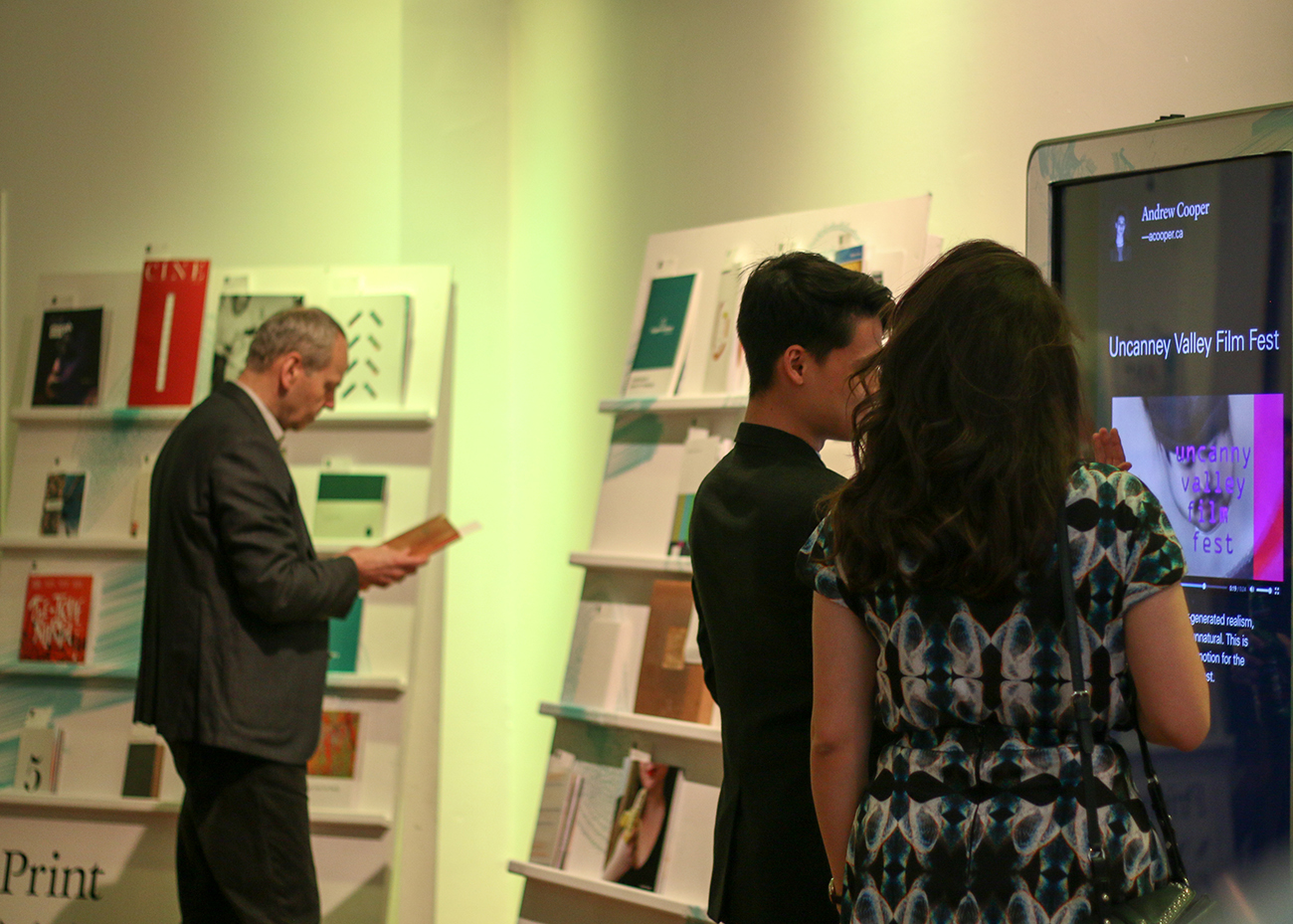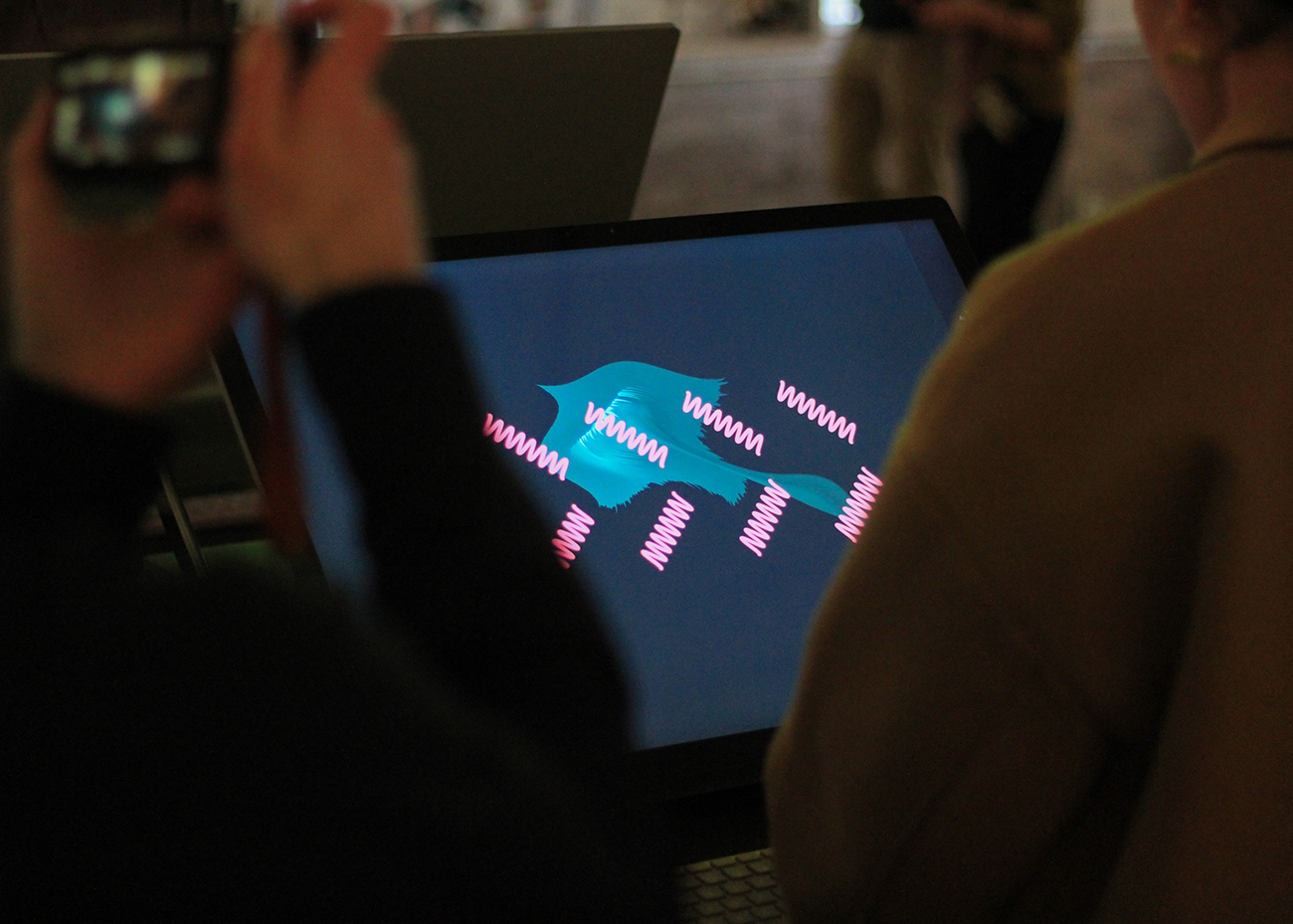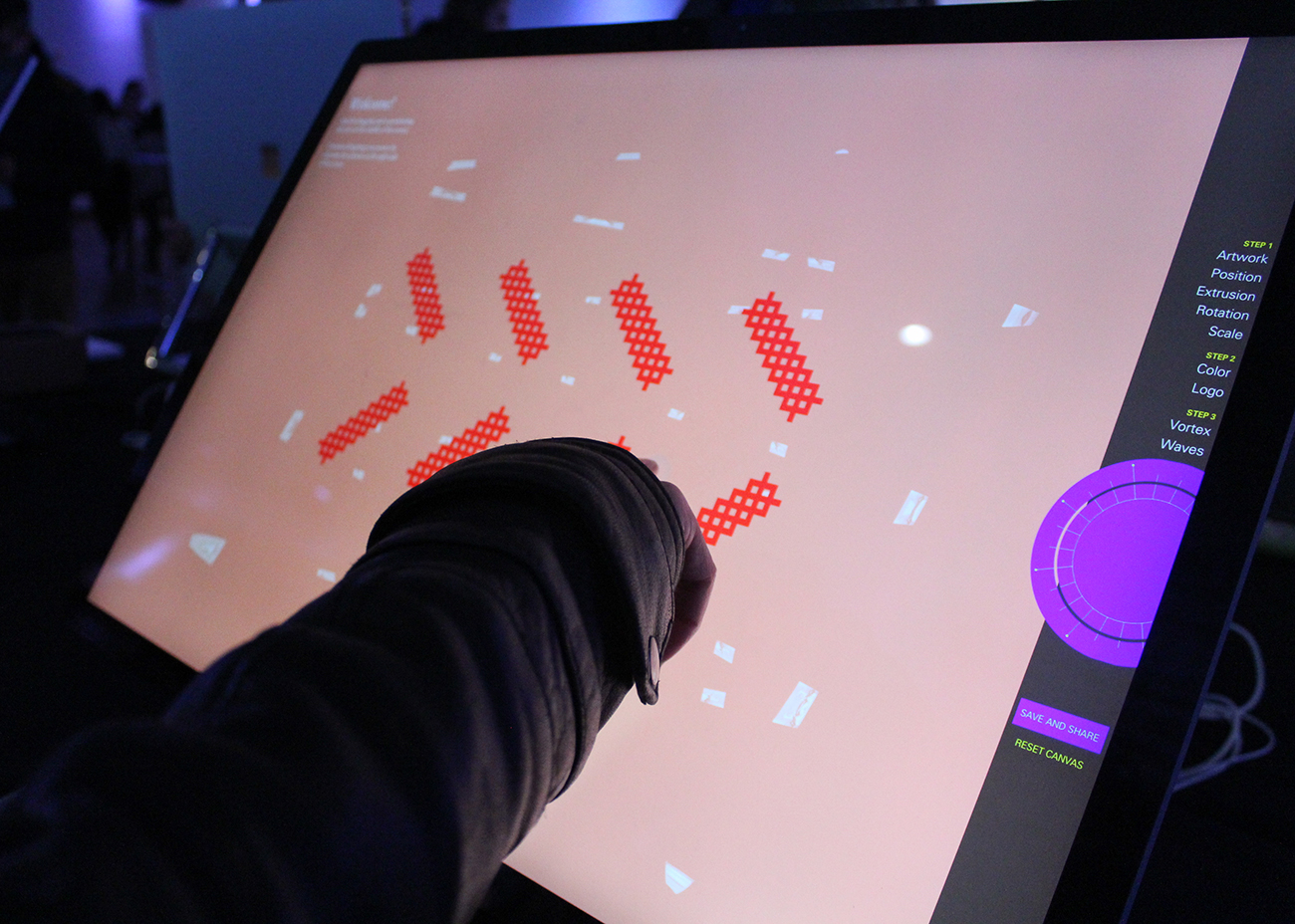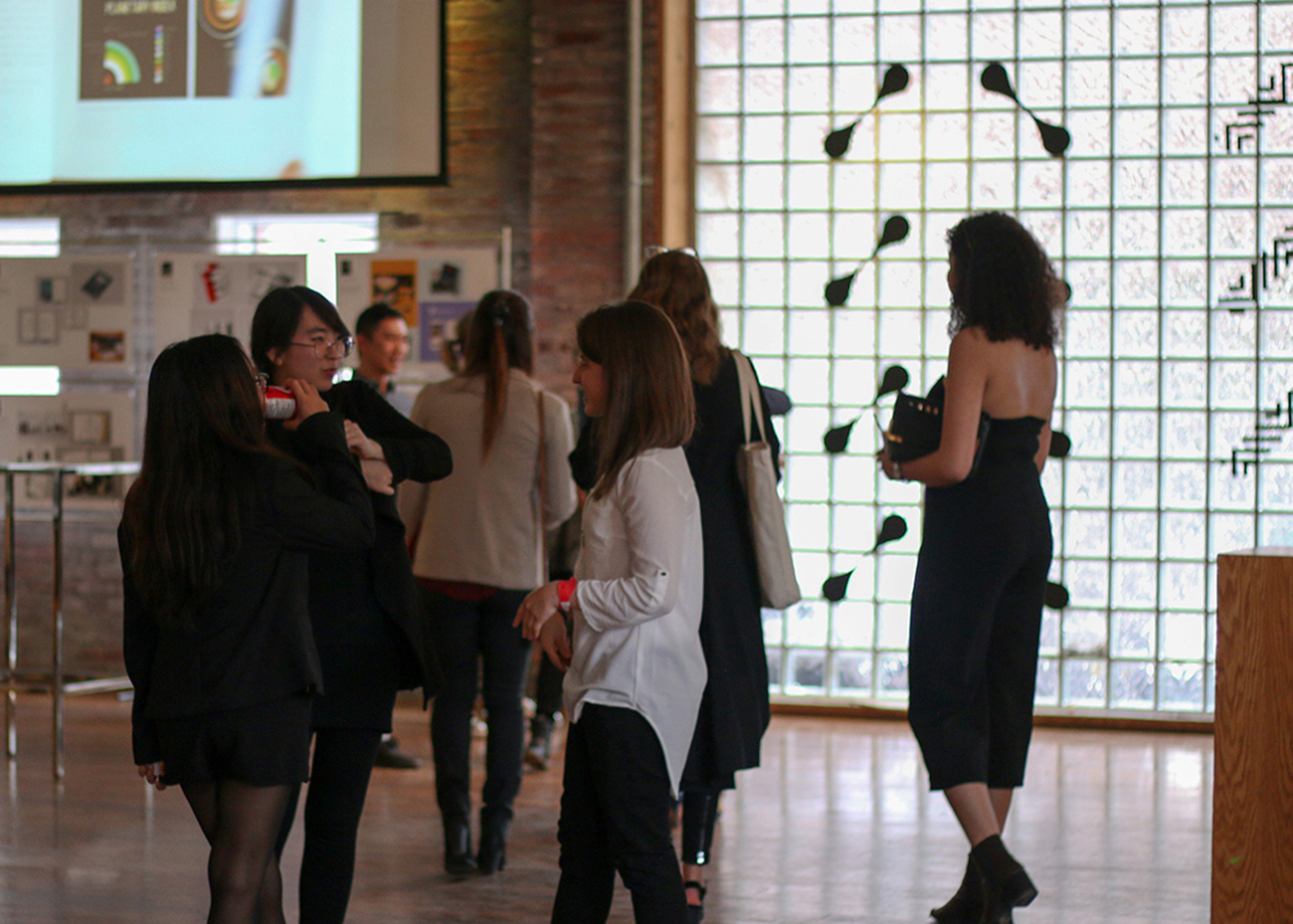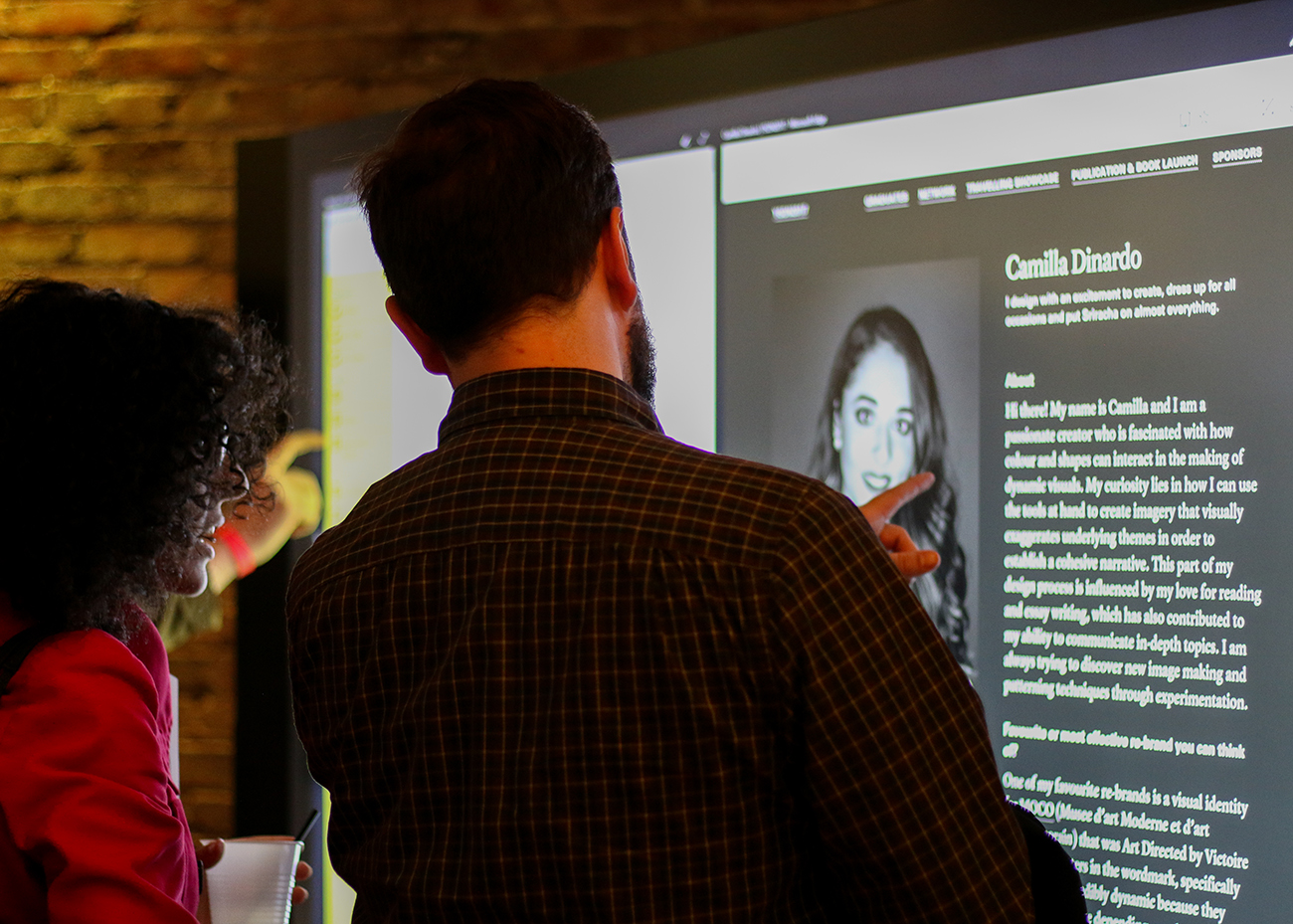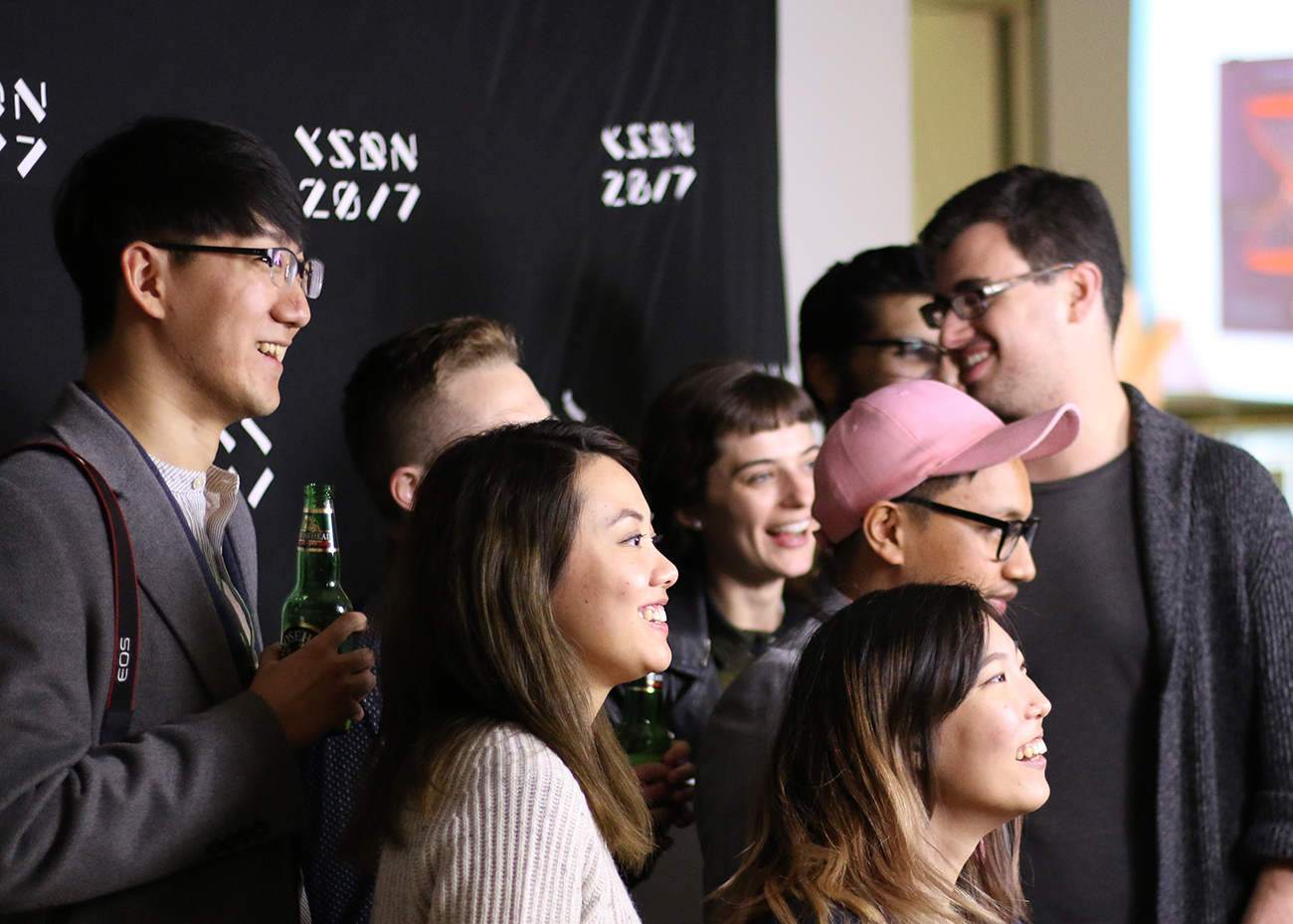Planning for the show began the summer before our final school year. In May 2016, myself and a group of students got together with the two faculty members who oversee our showcase. We approached the entire show as a design challenge, first considering the format that previous YSDN shows had taken. Typically, YSDN graduation shows were held in one location in downtown Toronto for one to three days, and students displayed their work in their allotted space. Sometimes there were separate viewing times for members of the industry, and sometimes industry and students’ family and friends were there at the same time. The familiarity of this format was one of its strengths, but it had weaknesses that we felt we could address: limited access and time, visitors with different agendas, the shows’ ephemeral nature, and low engagement with our respective school communities as well as with the public. We considered the audiences for our show and listed their goals, and this became the information we would use in September to start planning our show.
Seventeen other elected classmates and I formed our show’s executive committee. The executive committee was made up of two co-chairs, two treasurers, one secretary, one producer, and two executives from each of the branding, experiential, publication, digital and interactive, sponsorship and fundraising, and operations committees. I helped coordinate this group to come up with a diverse series of components that would address our audiences and their needs. The audiences and goals and the showcase elements that served them are shown below. This information formed the framework for all of our design decisions moving forward.
Audience
Goals
Audiences and goals
graduating YSDN students:
- celebrate;
- network with industry professionals;
- showcase their work
family and friends of students:
- celebrate;
- see student work;
- learn what students do
design industry and design community:
- network and recruit;
- see student work;
- learn about current design education
the schools (York University and Sheridan College):
- showcase student work and skills;
- recruit new students
the YSDN program:
- showcase student work and skills;
- recruit new students
the public:
- see student work;
- learn what students do;
- have fun
Show component
Audience goals addressed
Show components and audience goals addressed
travelling show:
- graduates: celebrate, showcase work;
- family and friends: celebrate, see student work;
- York and Sheridan: showcase student work and skills;
- the YSDN program: showcase student work and skills, recruit new students;
- the public: see student work and learn what students do, have fun
book launch:
- graduates: network, showcase work;
- the design industry: network and recruit, see student work, learn about design education;
- York, Sheridan, and the YSDN program: showcase student work and skills, network
publication:
- graduates: celebrate (longer life than show), showcase work, network;
- family and friends: celebrate, see student work, learn what students do;
- the design industry: network and recruit, see student work, learn about design education;
- York, Sheridan, and the YSDN program: showcase student work and skills
website:
- graduates: showcase work, network;
- family and friends: find showcase information, see student work, learn what students do
- the design industry: find showcase information, network and recruit, see student work, learn about design education;
- York, Sheridan, and the YSDN program: showcase student work and skills;
- the public: find showcase information, see student work, learn what students do
Once the show components were determined, it became my job as co-chair to ensure that teams kept our audiences’ goals in mind as they began conceptualizing and designing. I looked for opportunities for teams to work together in order to capitalize on our students’ diverse strengths and our numbers. I also helped each committee understand how their work fit in with the larger vision for the show; this allowed everyone to work more efficiently while also ensuring that our user experience was as thorough and robust as possible. Additionally, I worked with the executives of each committee to keep progress on track and the show on budget by making sure that our overarching timeline and financial plan were being followed.
While performing these top-level duties, I also spent time with our teams doing design work, providing critique, shopping for materials, writing copy, constructing displays, editing photos, discussing user experiences, loading trucks, and generally helping wherever I could or was needed. My work with each team ranged from conceptual planning to fine-detail production.
In April 2017, in its final form, our travelling show visited Sheridan College, York University, The Gladstone Hotel on Queen Street West, and Konrad Group’s BrainStation space at King and Spadina, and consisted of 85 printed display panels, three display stands of books and magazines, one display table of packaging work, and three interactive touch-screen kiosks (one dedicated to interactive and motion work, one to displaying the student case studies on our website, and one that allowed visitors to create posters from our brand elements). Our website provided showcase details, in-depth case studies of student projects, and a networking tool that allowed visitors to the travelling shows to bookmark and be emailed the contact information of students that they had interest in speaking with. 1,000 copies of our publication were offset-printed and either sold or distributed to students, faculty, industry and the public. The publication captured a sample of the work, process and thinking of each student in our year through gallery pages, case studies and manifestos, and offered a glimpse into the process behind the showcase as written by our design teams’ executives (myself included). Our book launch, held at the Glass Factory on Queen Street West, was attended by over 350 creative professionals and allowed the design industry in Toronto exclusive access to our students, as well as providing all attendees with a free copy of our book. At this event, student case studies from the website were displayed on a Microsoft Surface Hub and our brand poster creator was moved onto four Microsoft Surface Studio desktop computers.
This showcase was the result of over 10,000 collective hours of thinking, discussion, design and execution by the YSDN class of 2017.
YSDN2017 Executives
Co-chairs
- Brian Kall
- Evelyn Quinn
Treasurers
- Carly Vetere
- Justine-Alyn Beauregard
Secretary
Producer
Branding
- Camilla Dinardo
- Simone Robert
- Andrew Cooper, Manager
Experiential
- Lauren Holden
- Angela Li
- Claudia Konopko, Manager
- Andrés Francken, Manager
Publication
- Joshua Singler
- Natalia Pushkar
- Javid Aziz, Manager
Digital & Interactive
- Danielle McLean
- Poya Alborzi
- Karen Keung, Digital Manager
- Luc Palombo, Interactive Manager
Operations
Sponsorship & Fundraising
Photos by Allen Kang, Melosha Ratnasingham, Taby Petre, Patrick Descartin, Madison Pflance, Lyndsay Wybrew, Javid Aziz, Samantha Lee, Kelley Bates, and Christina Paik.
Video by Christina Paik.
